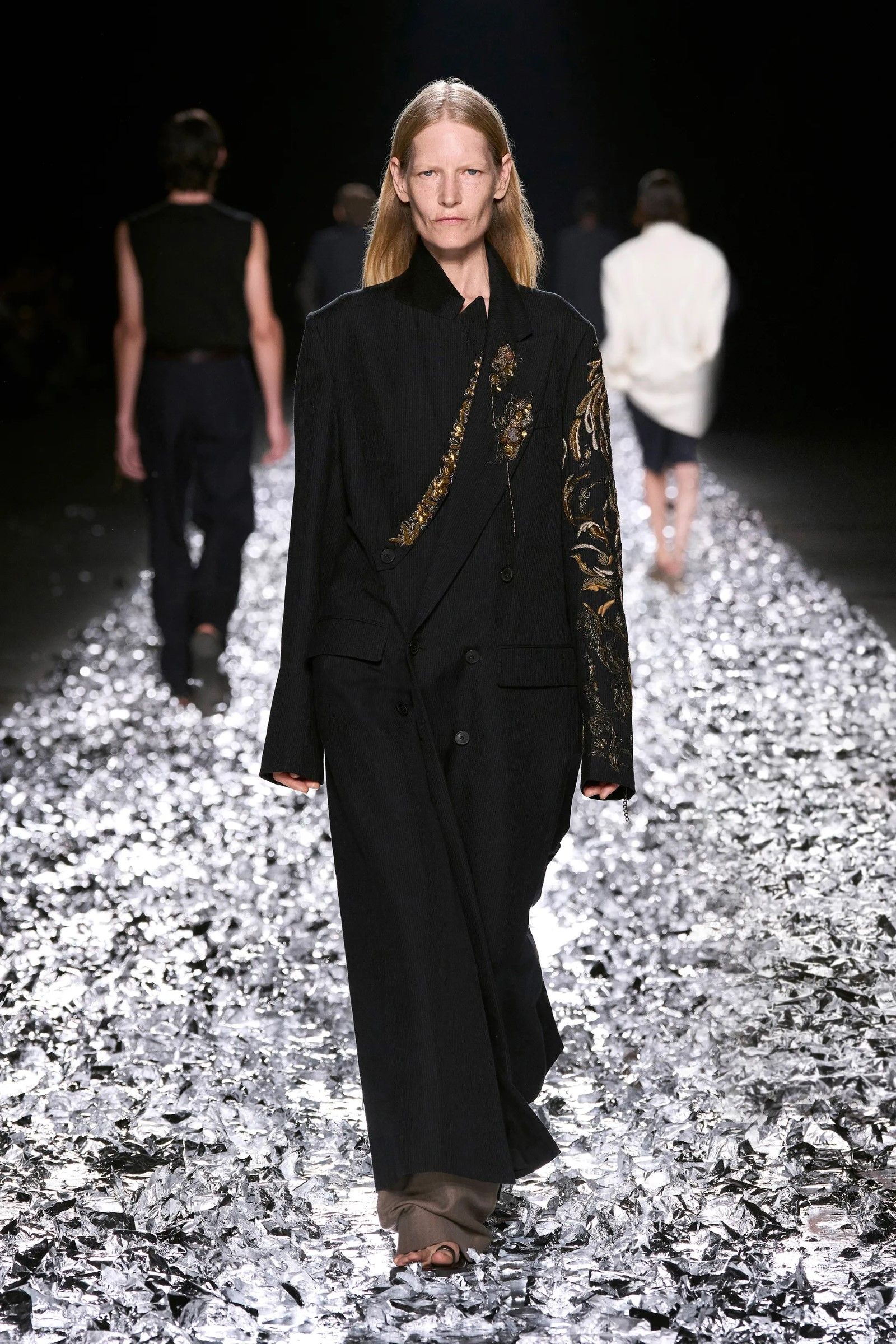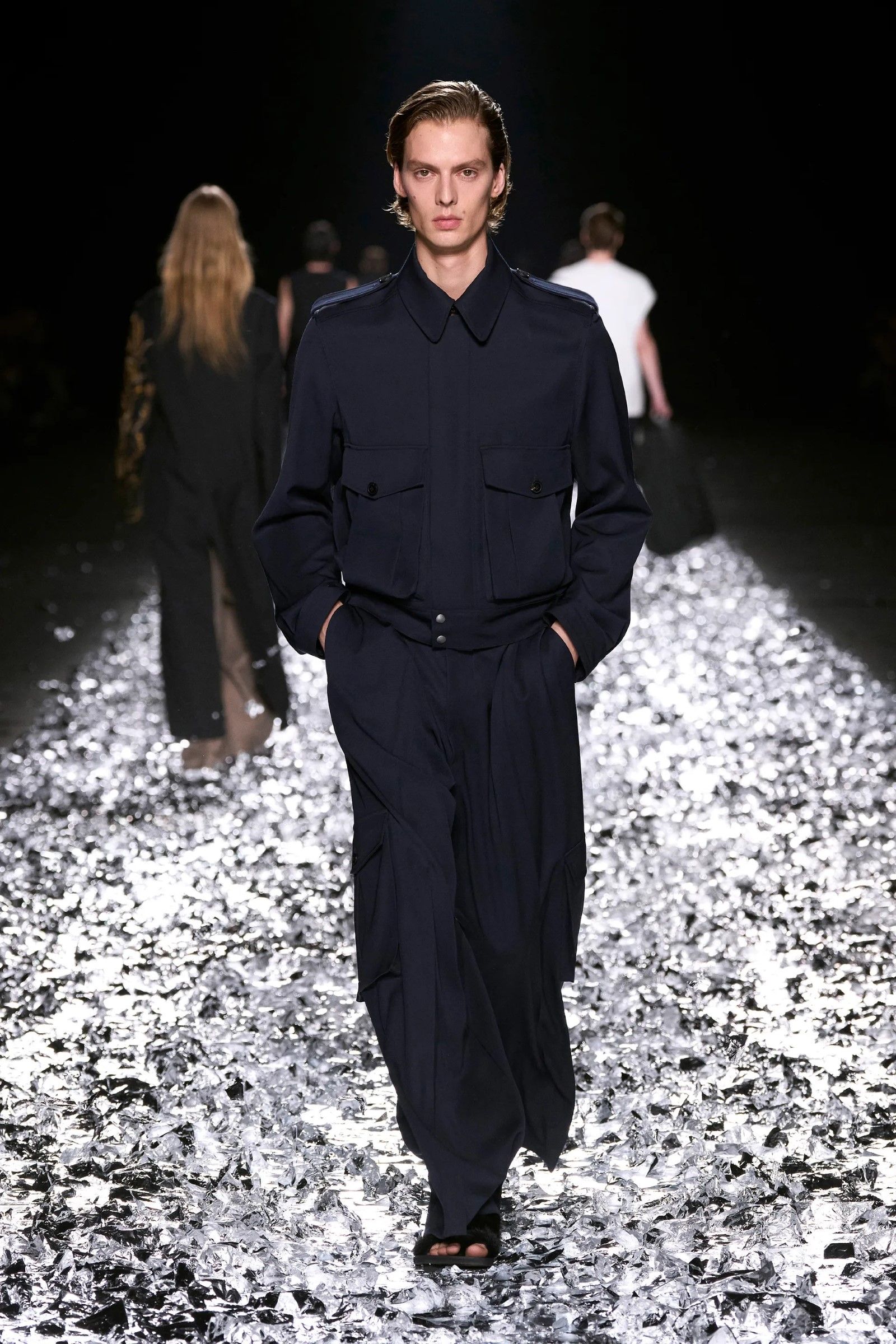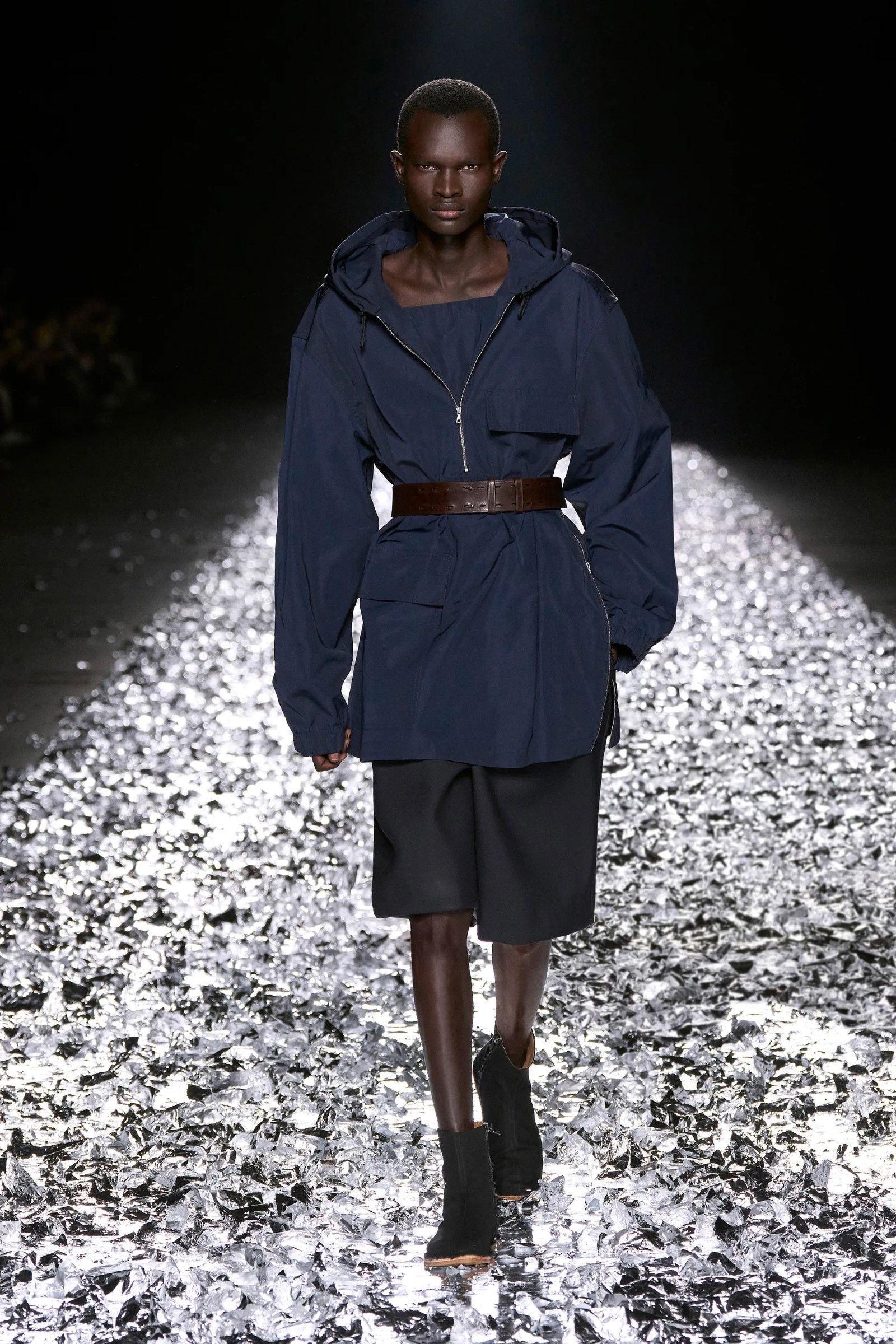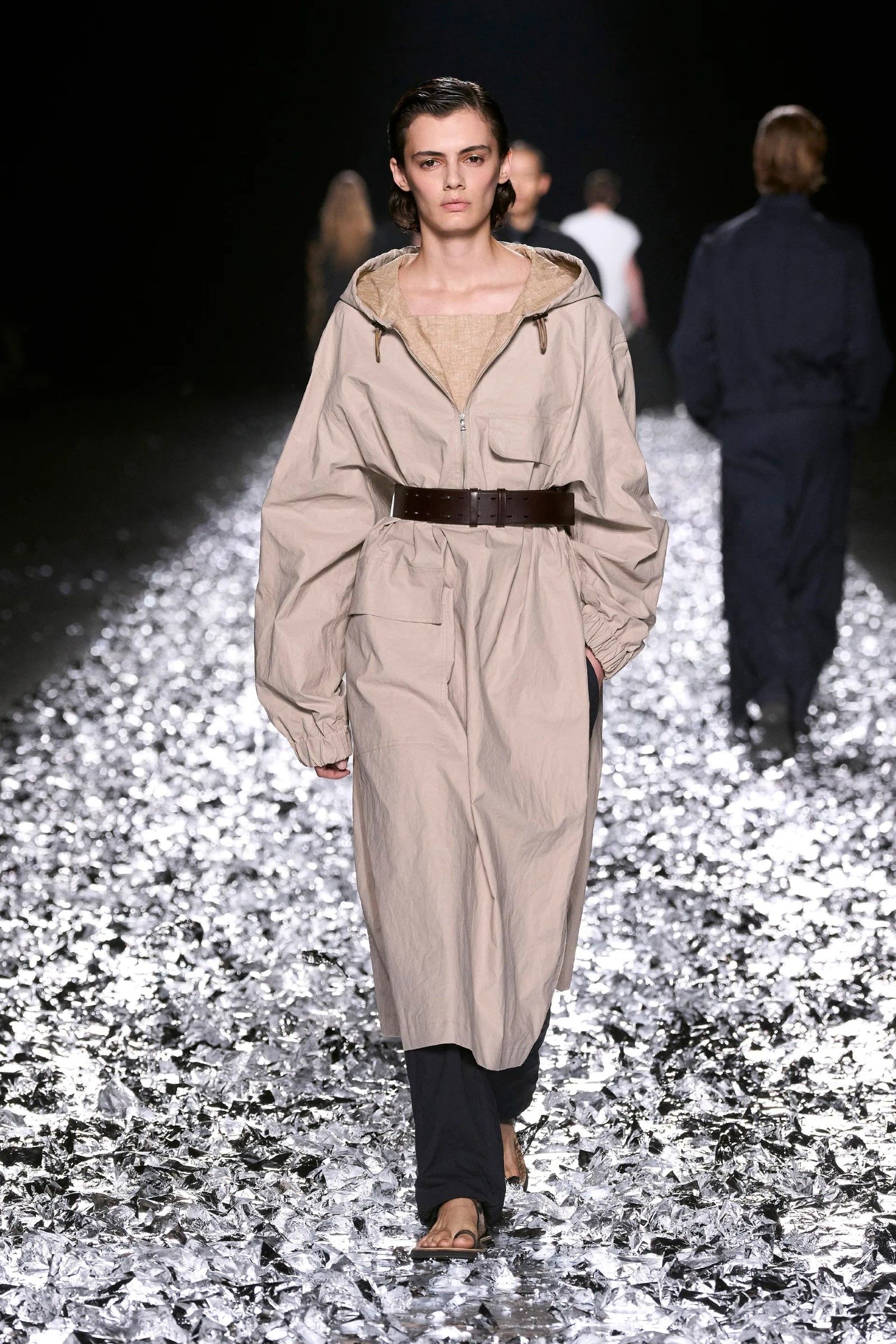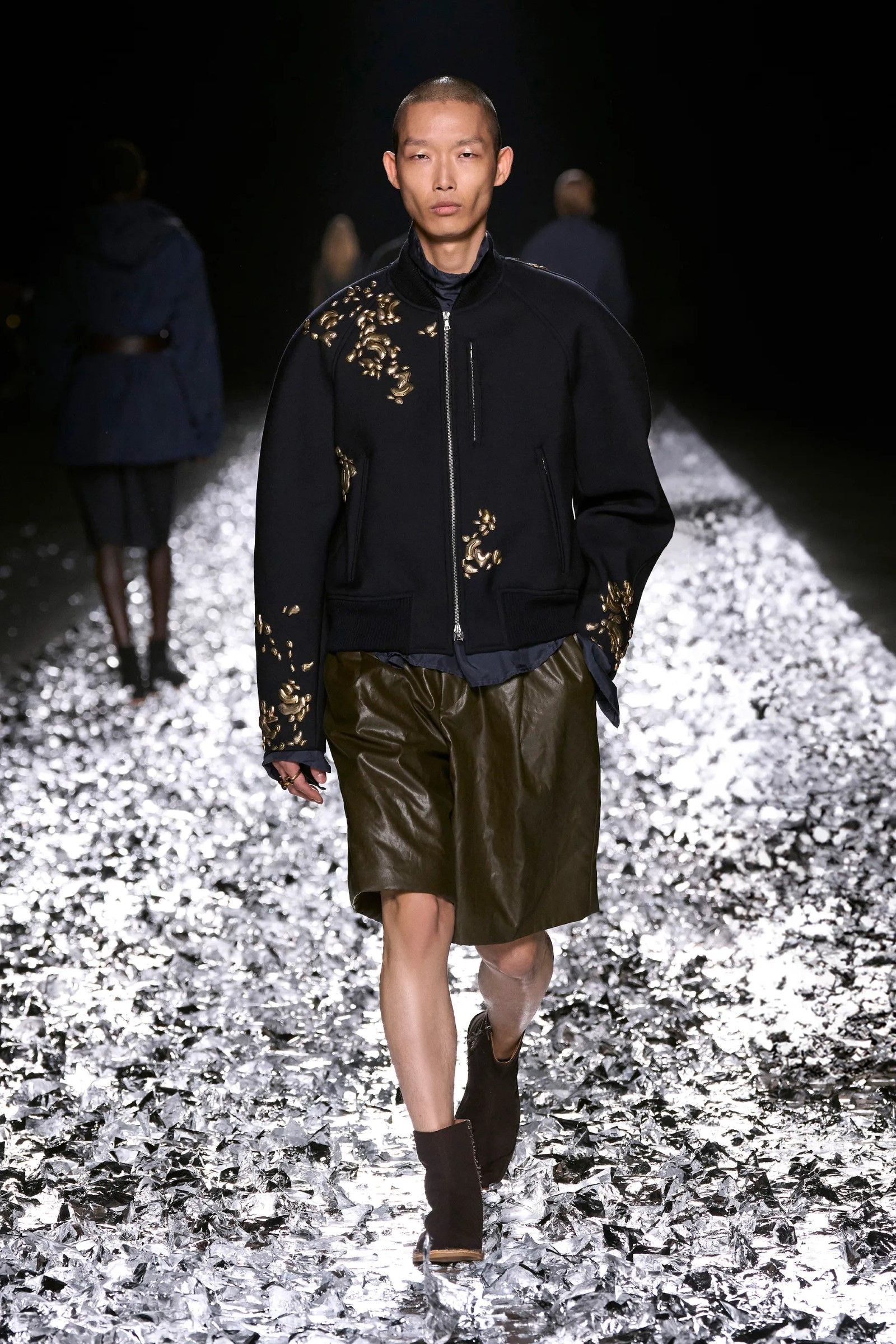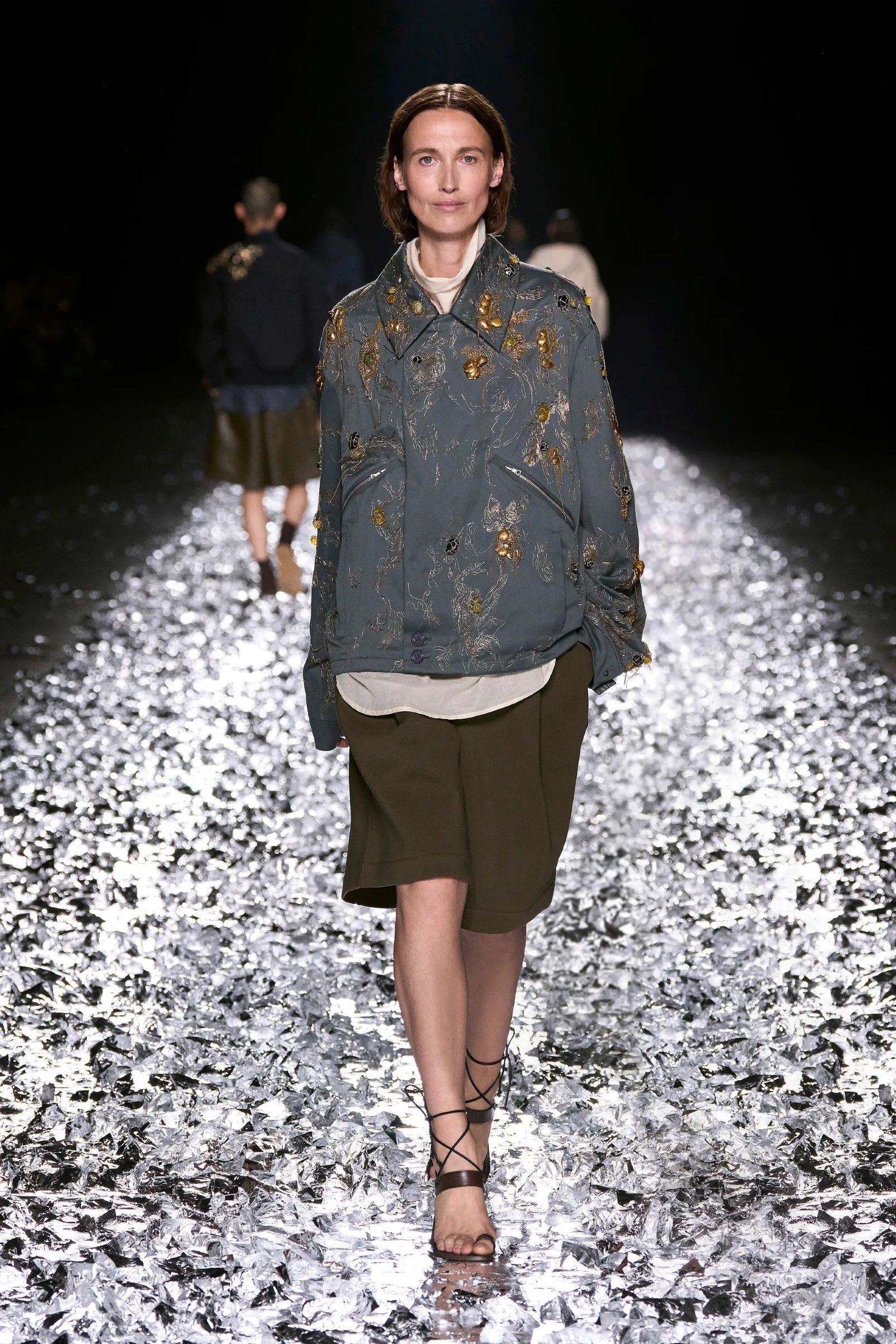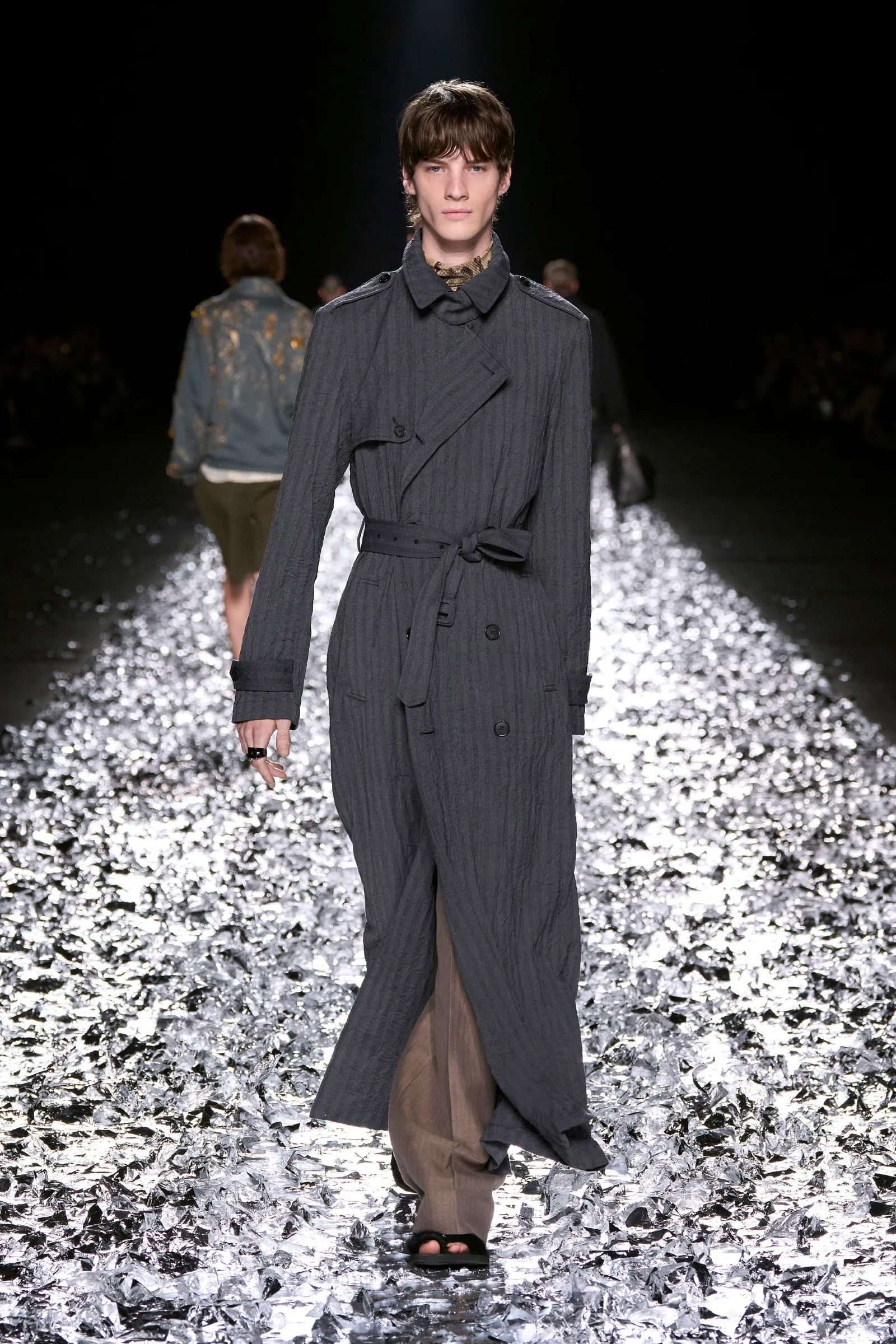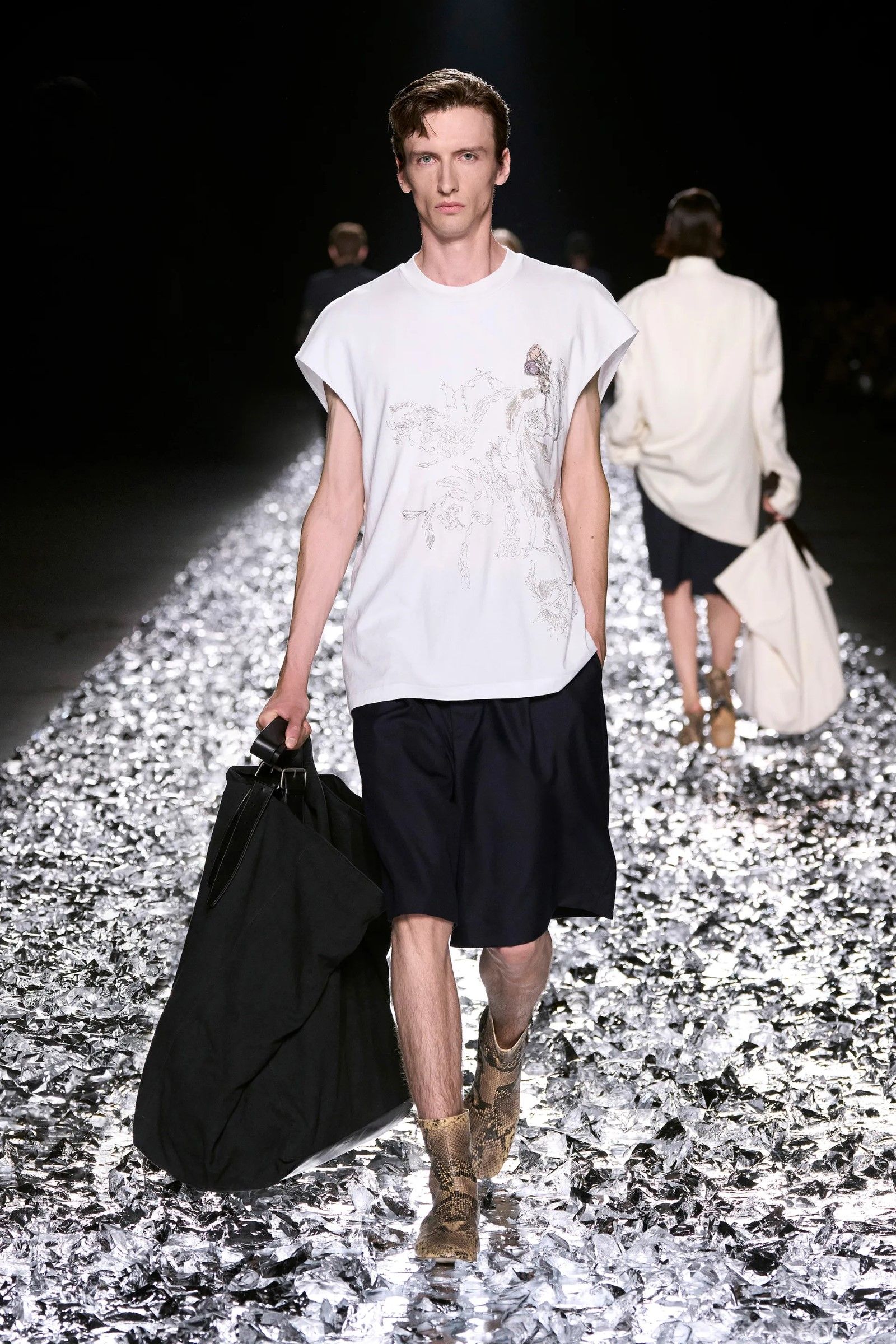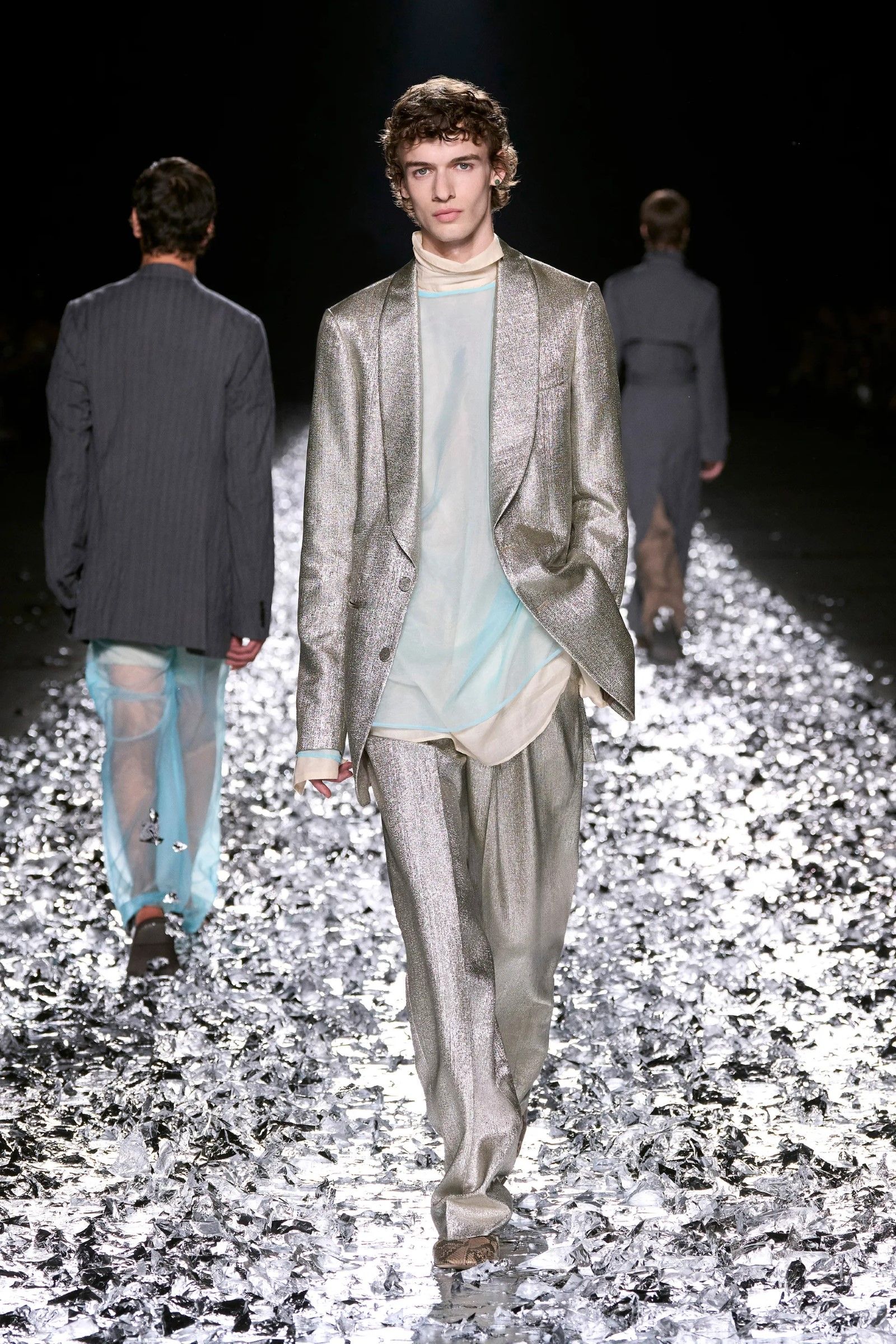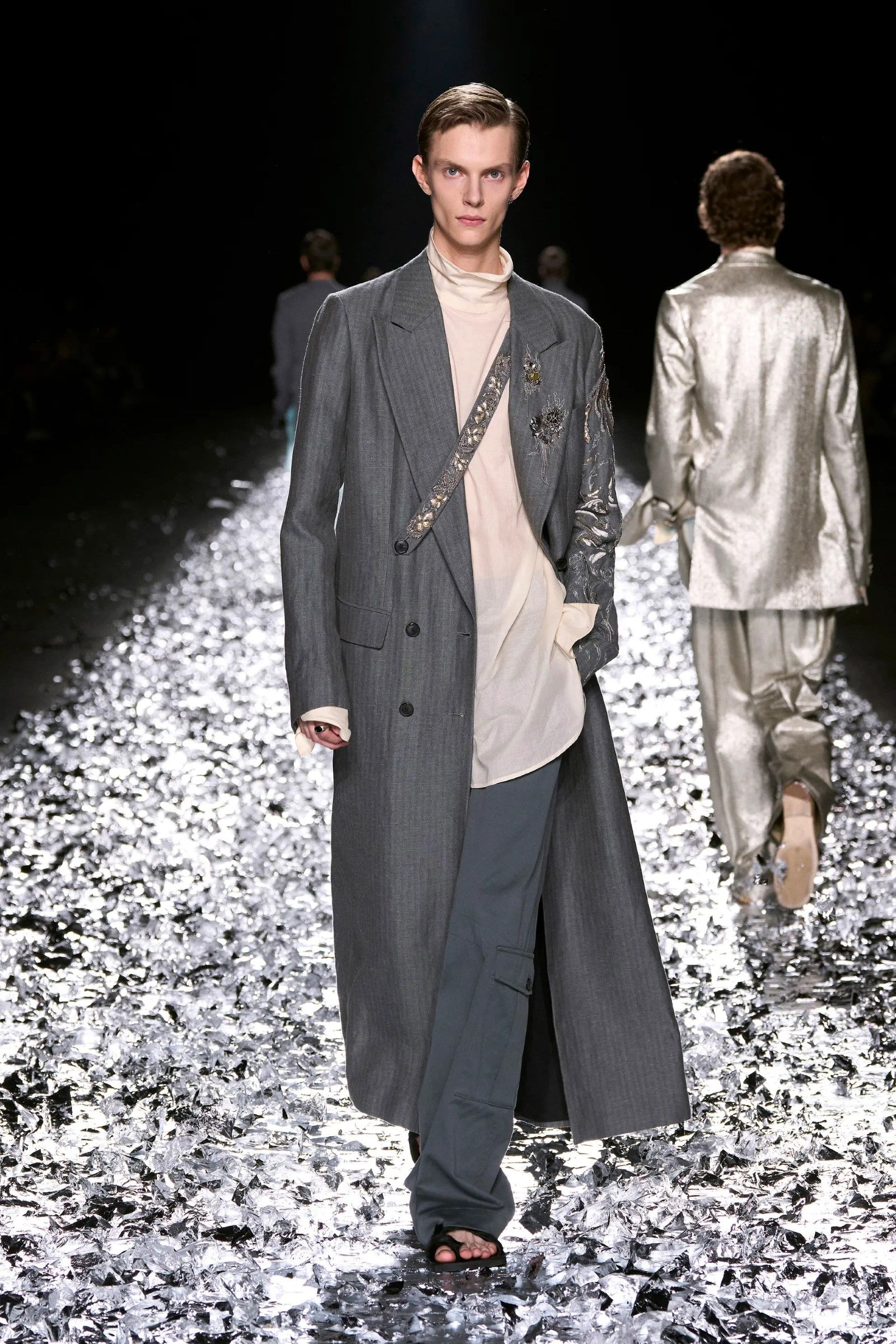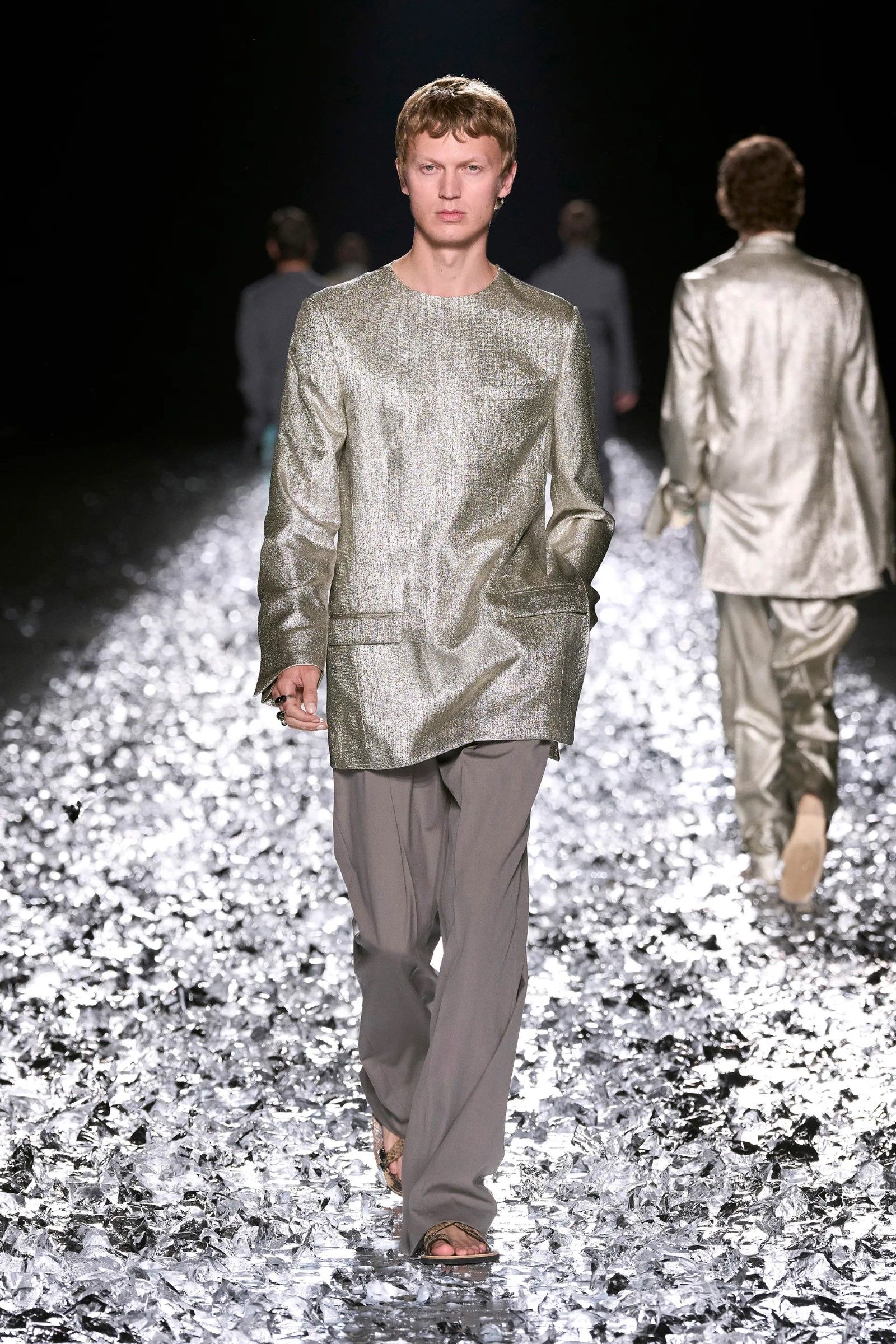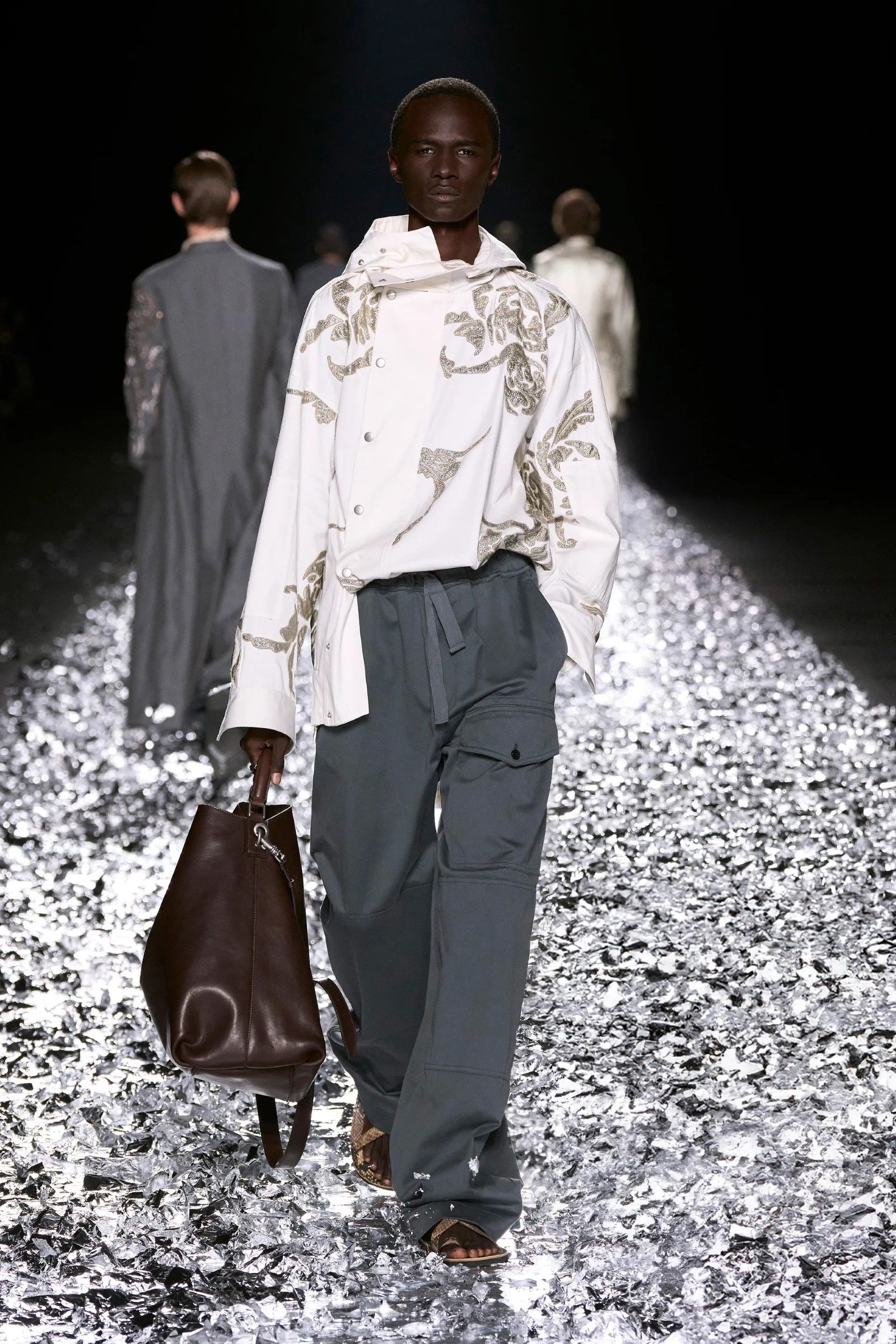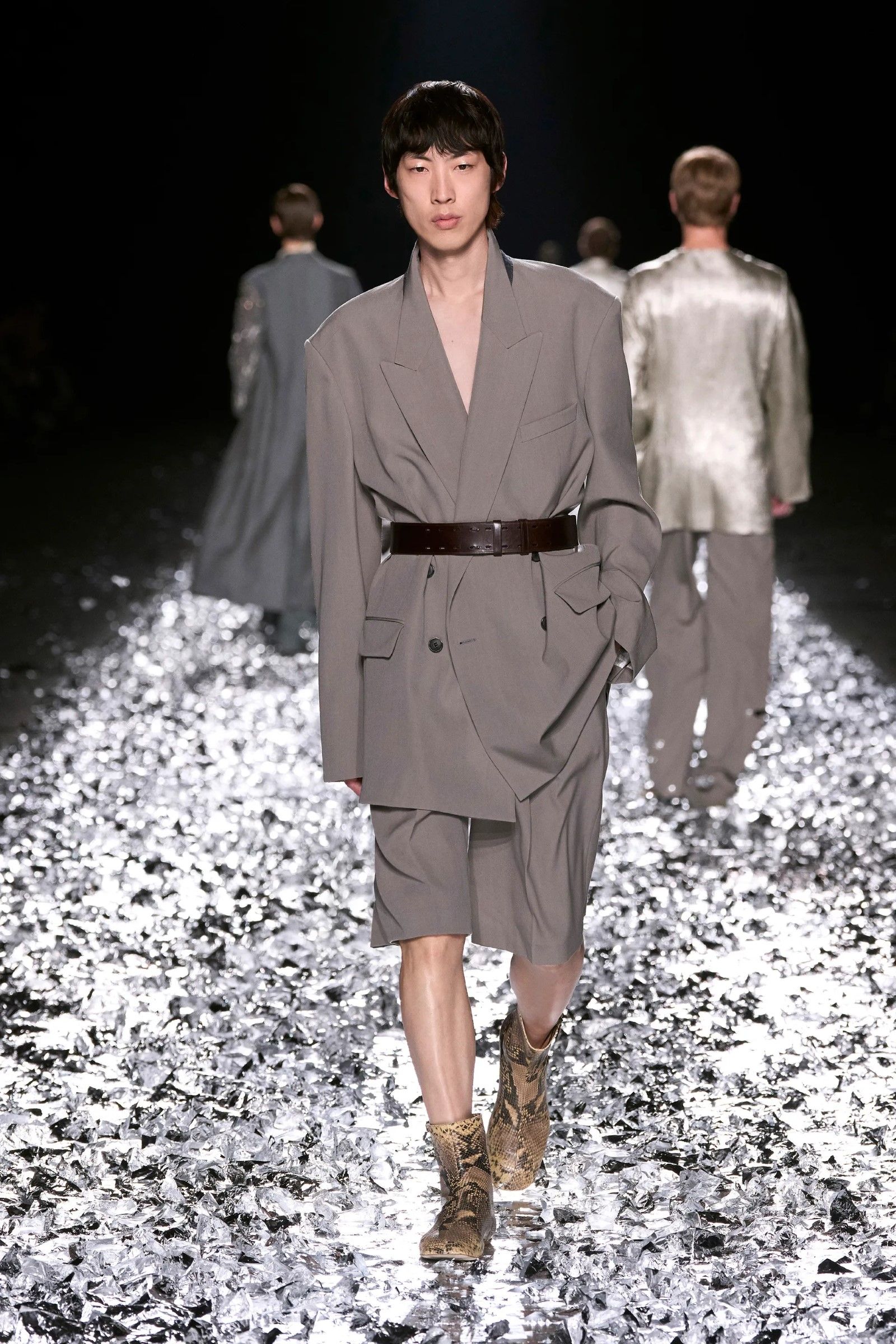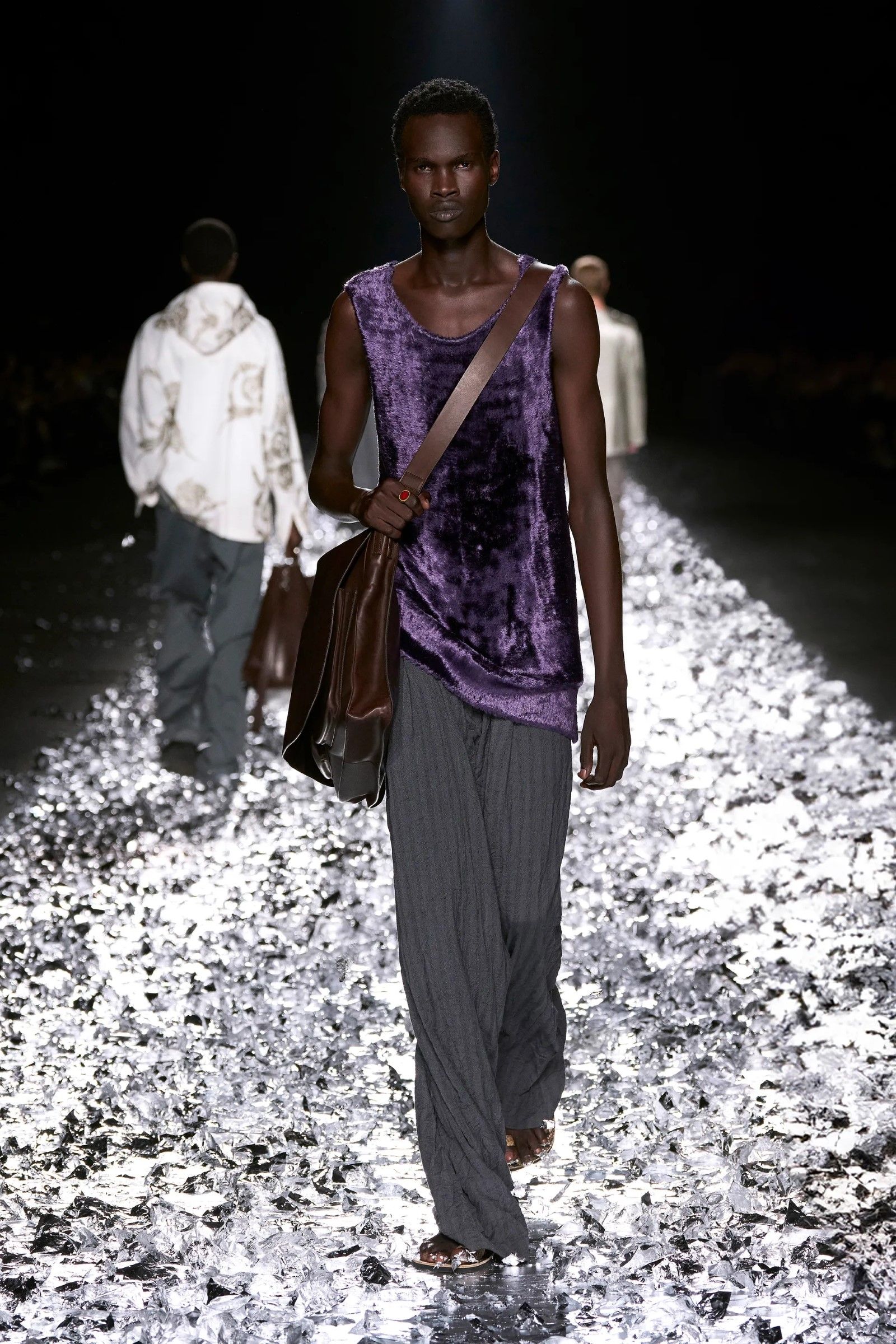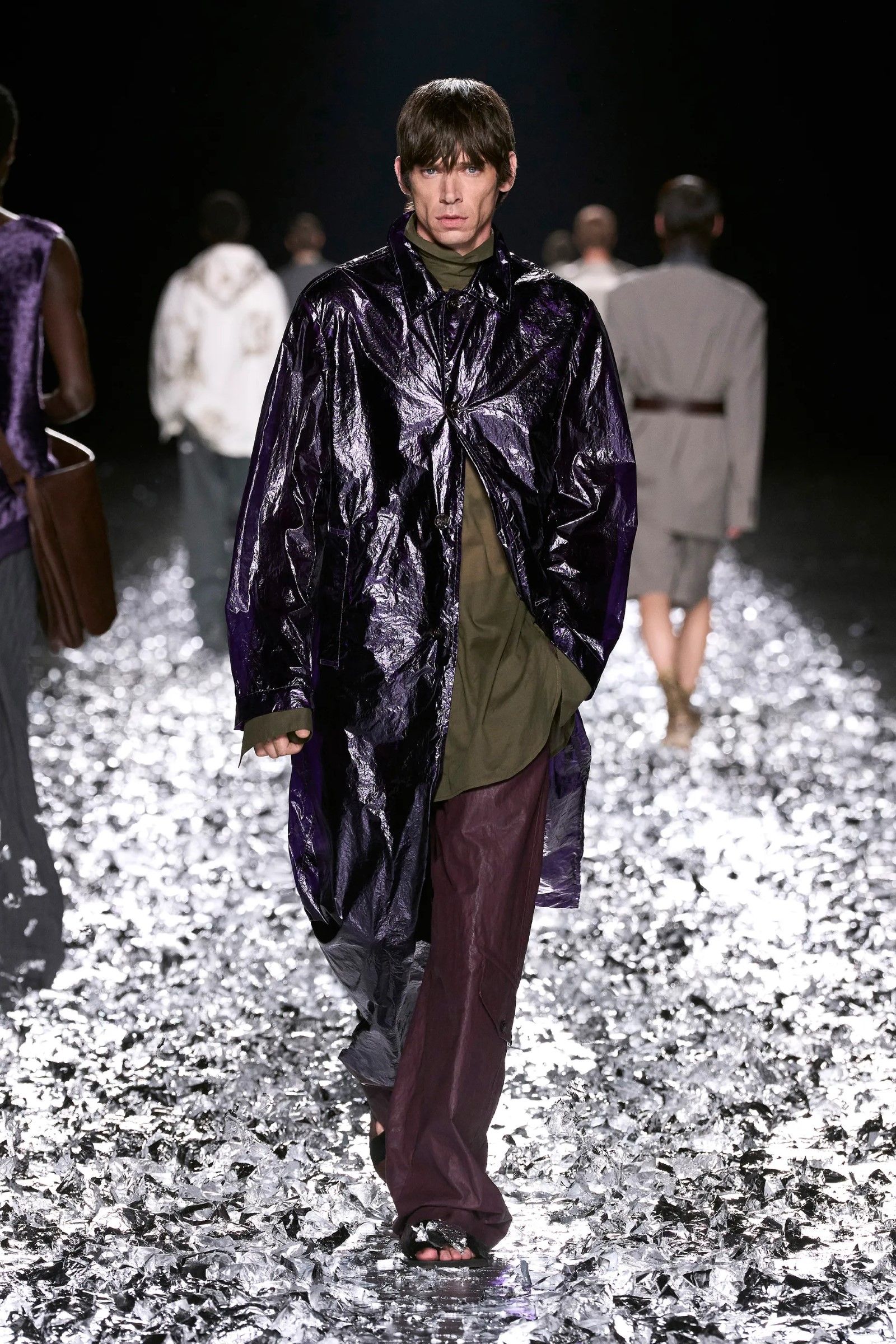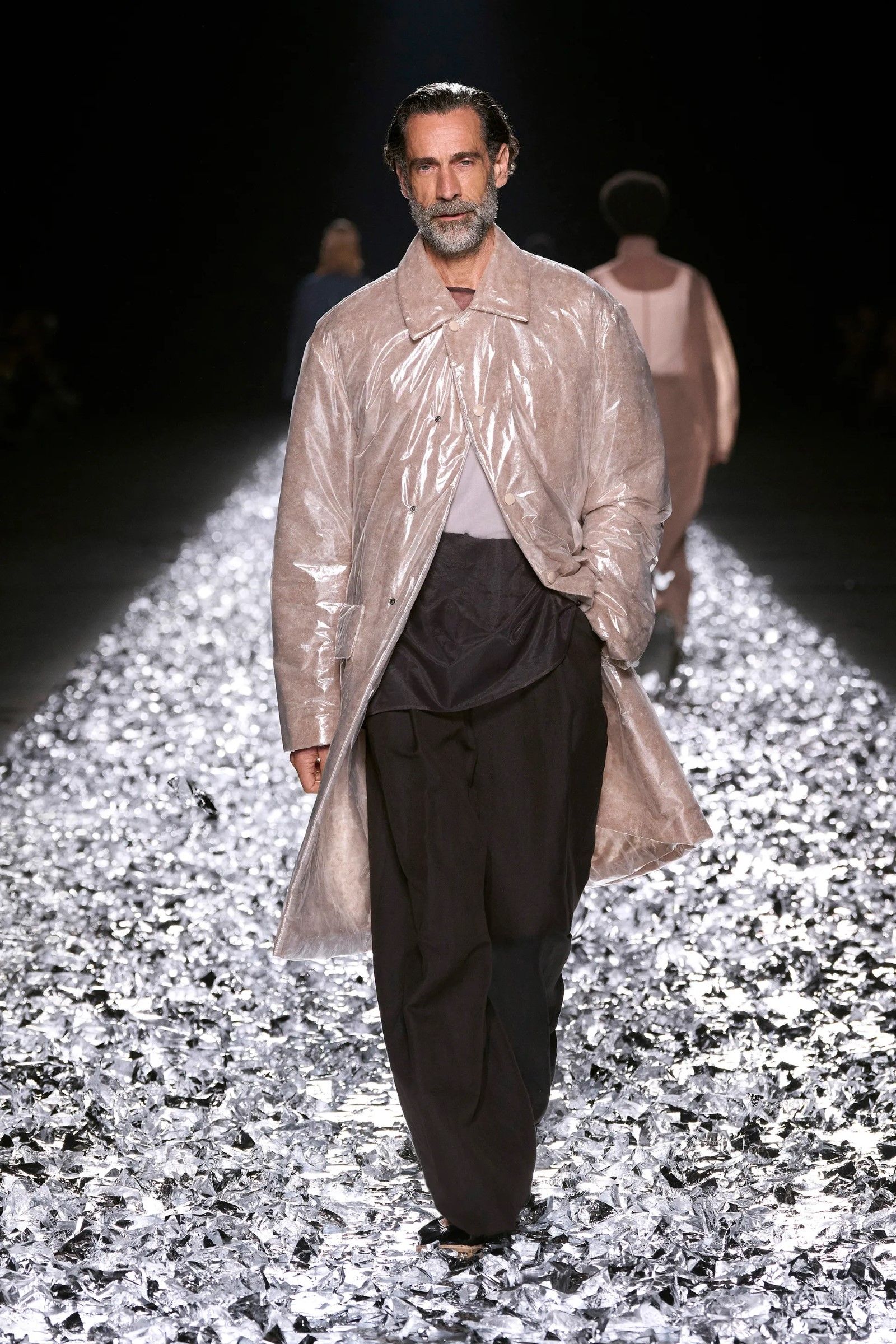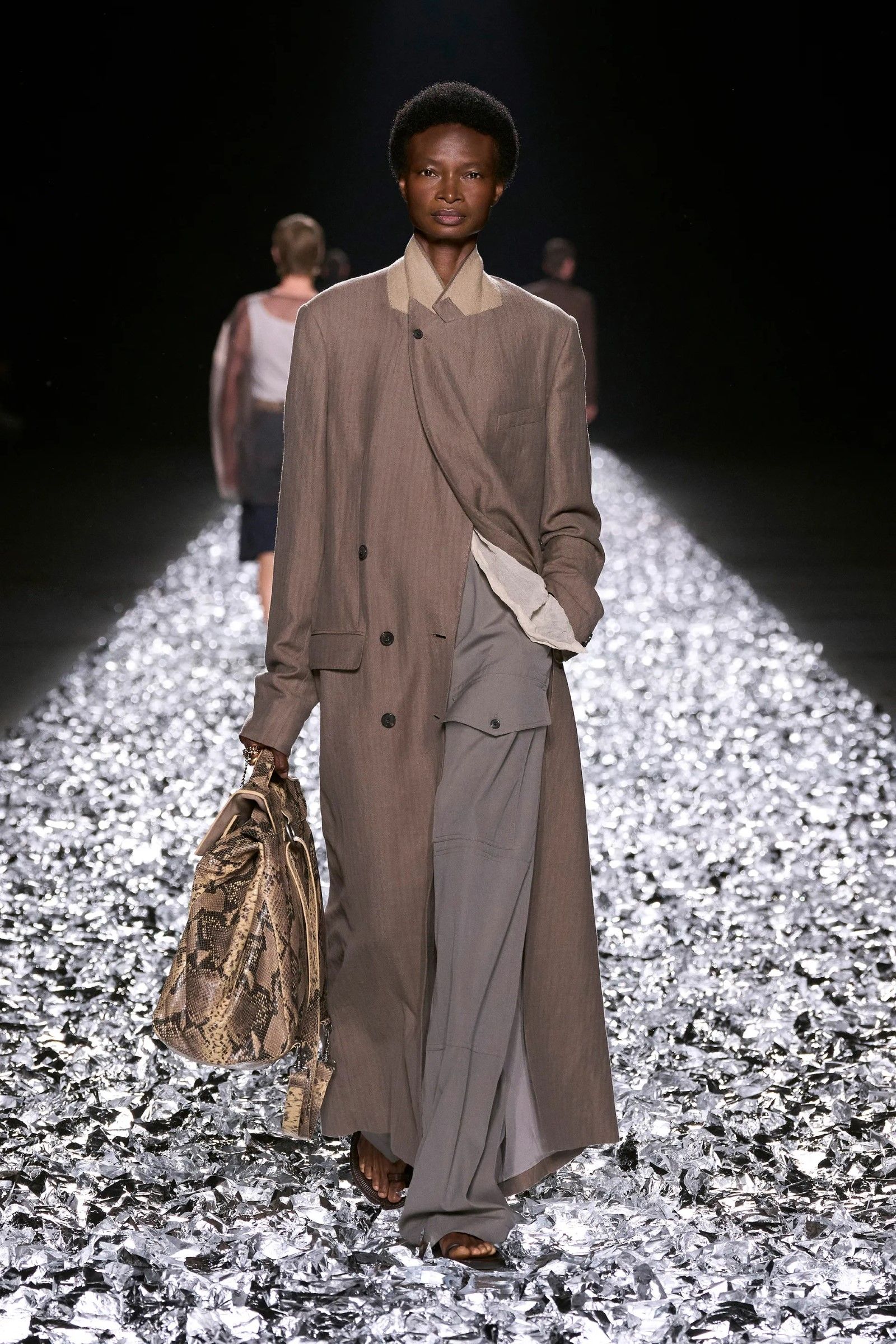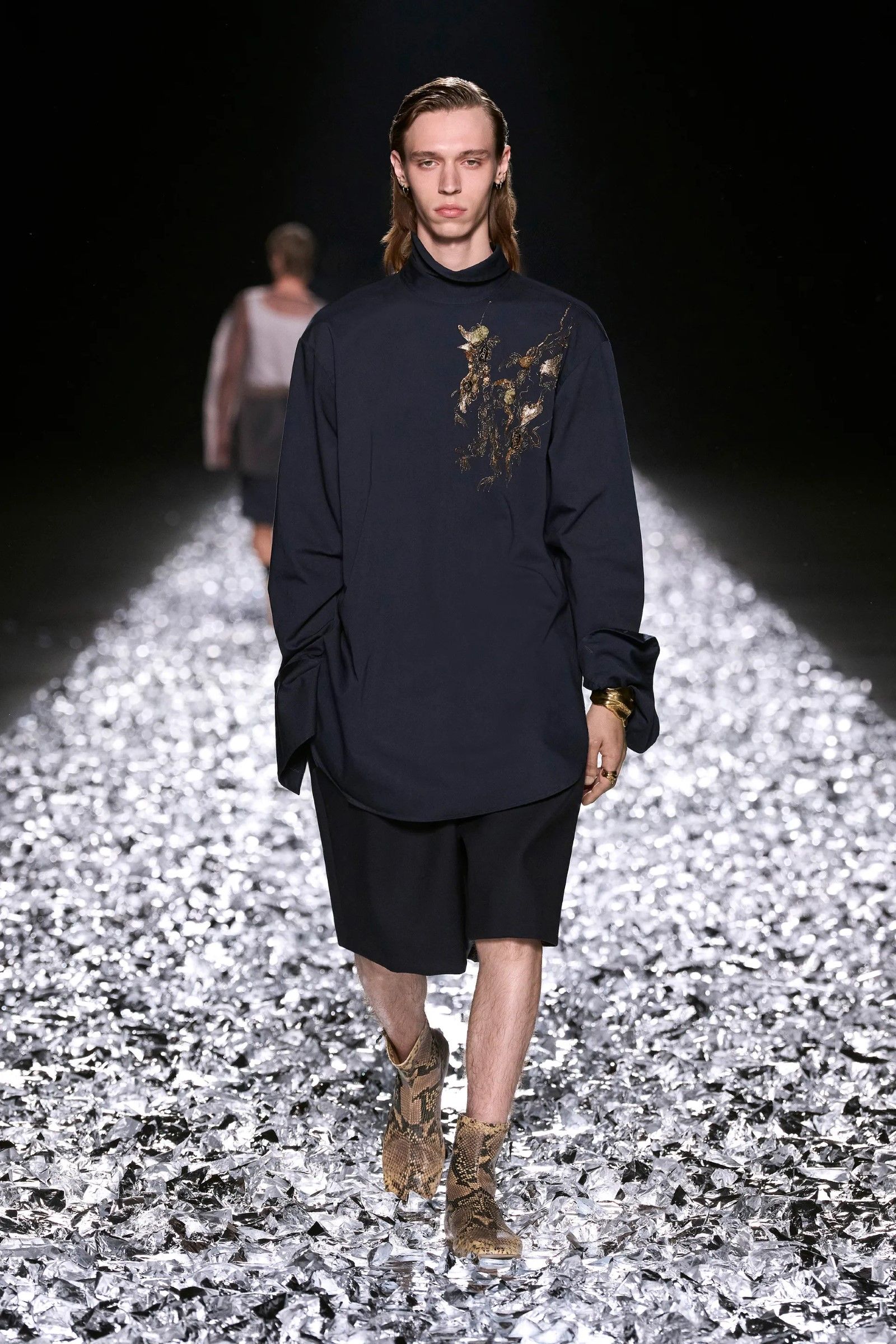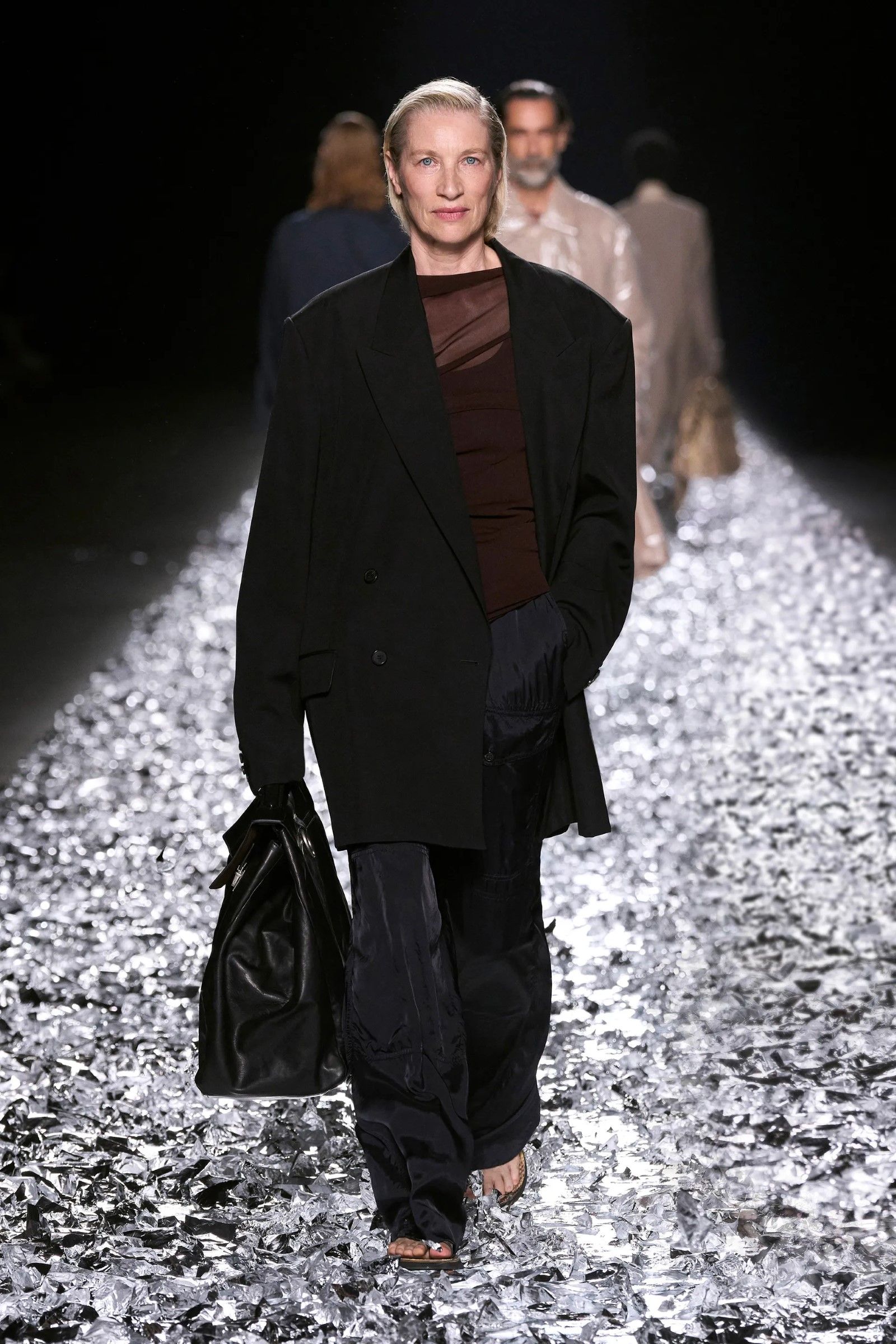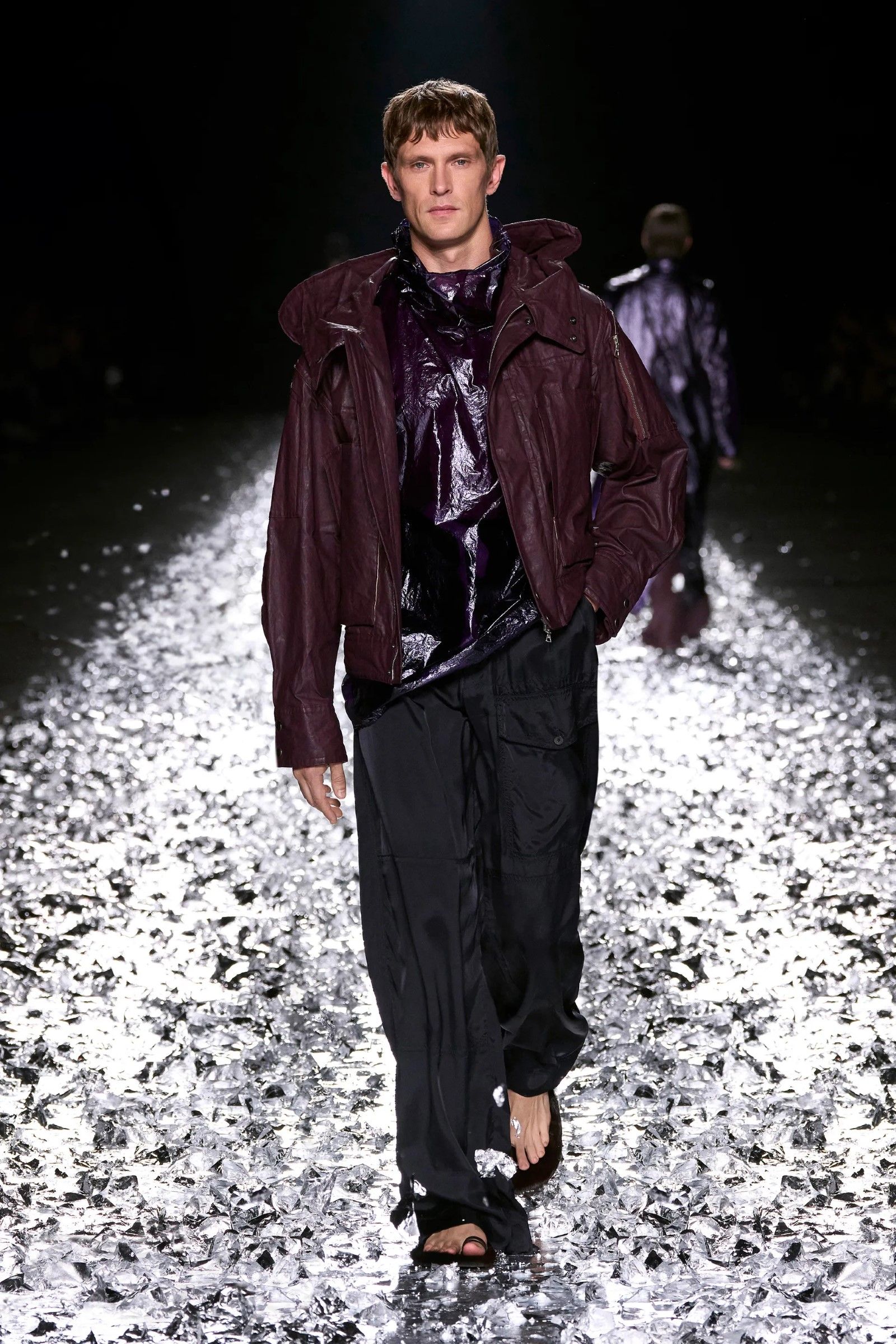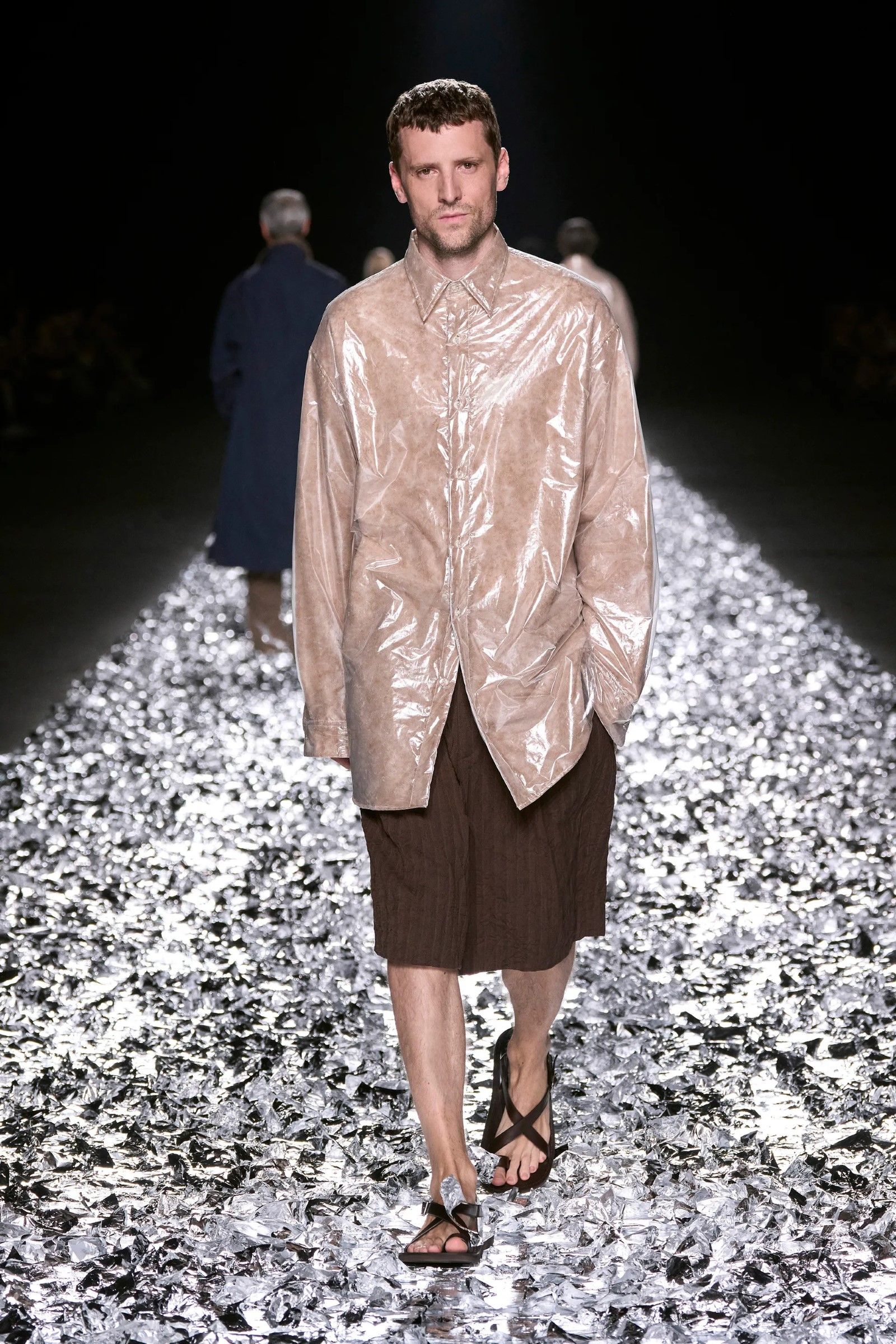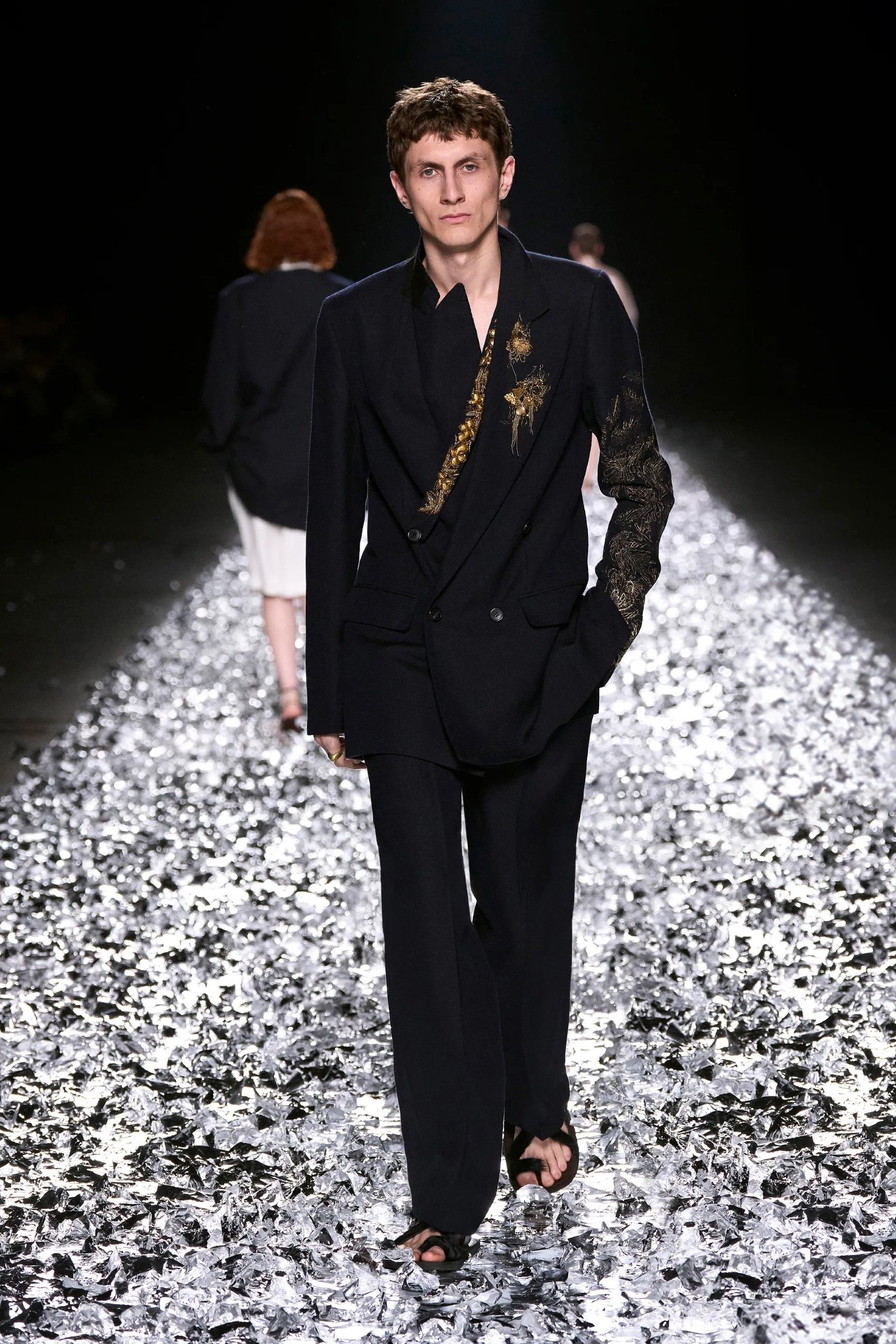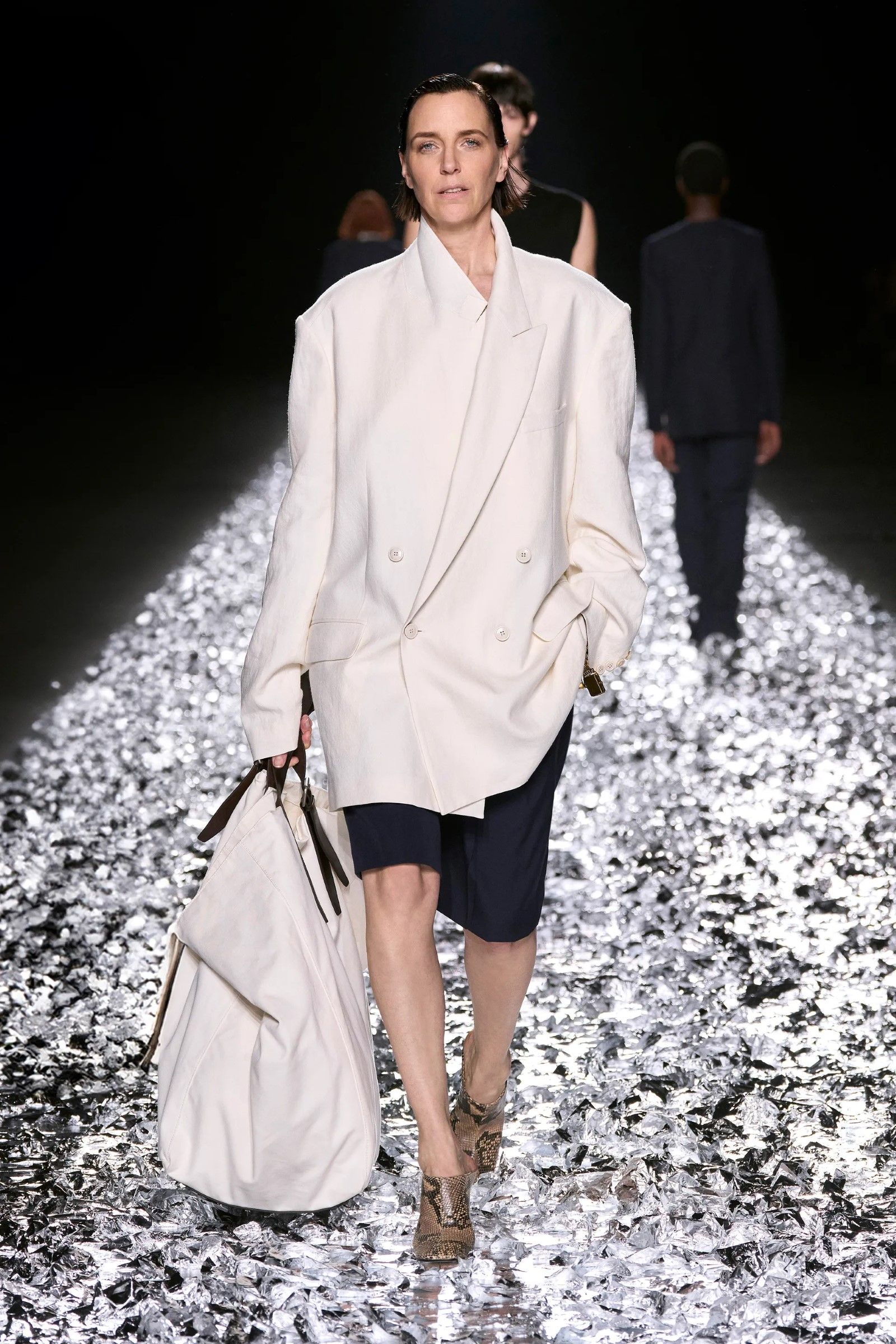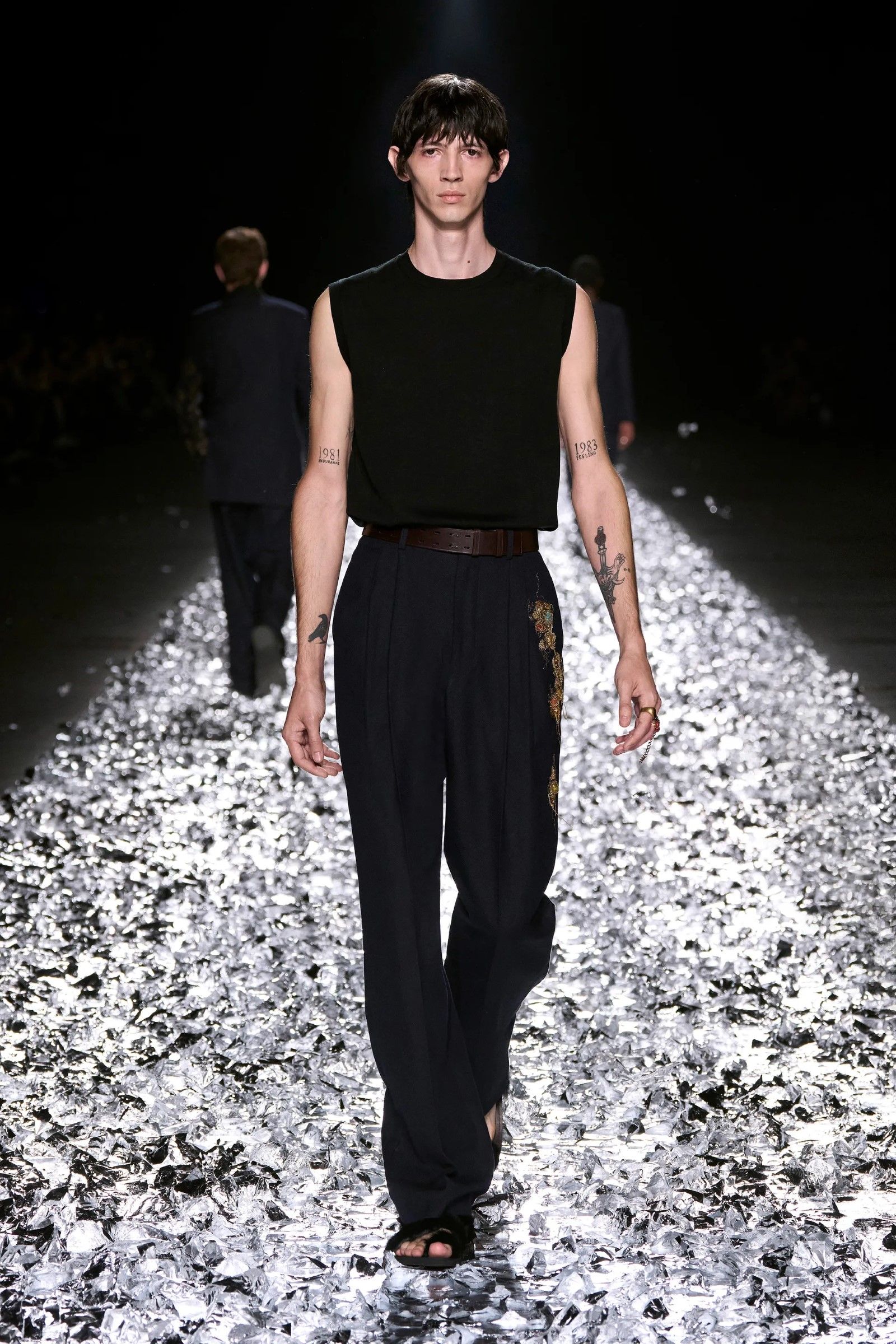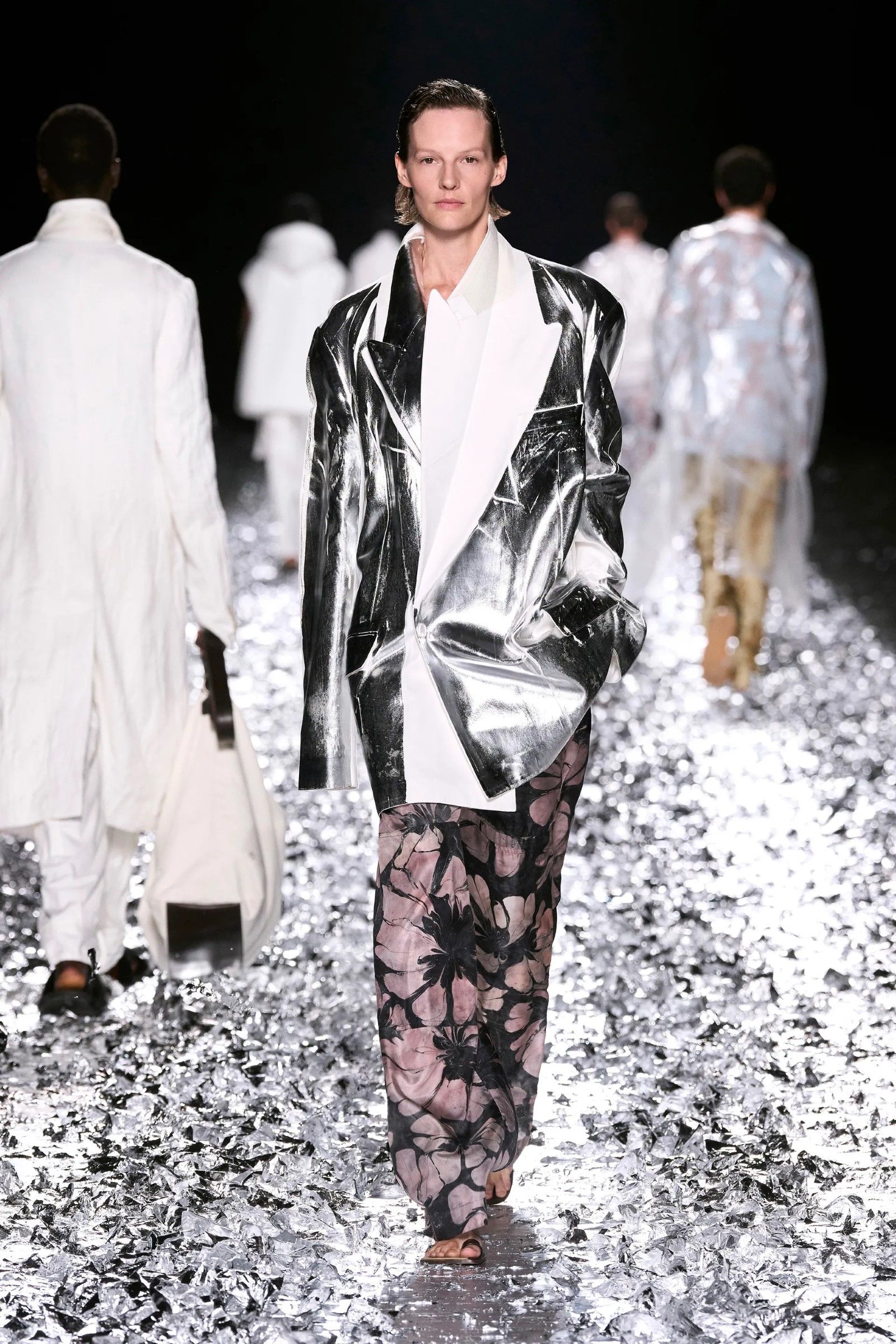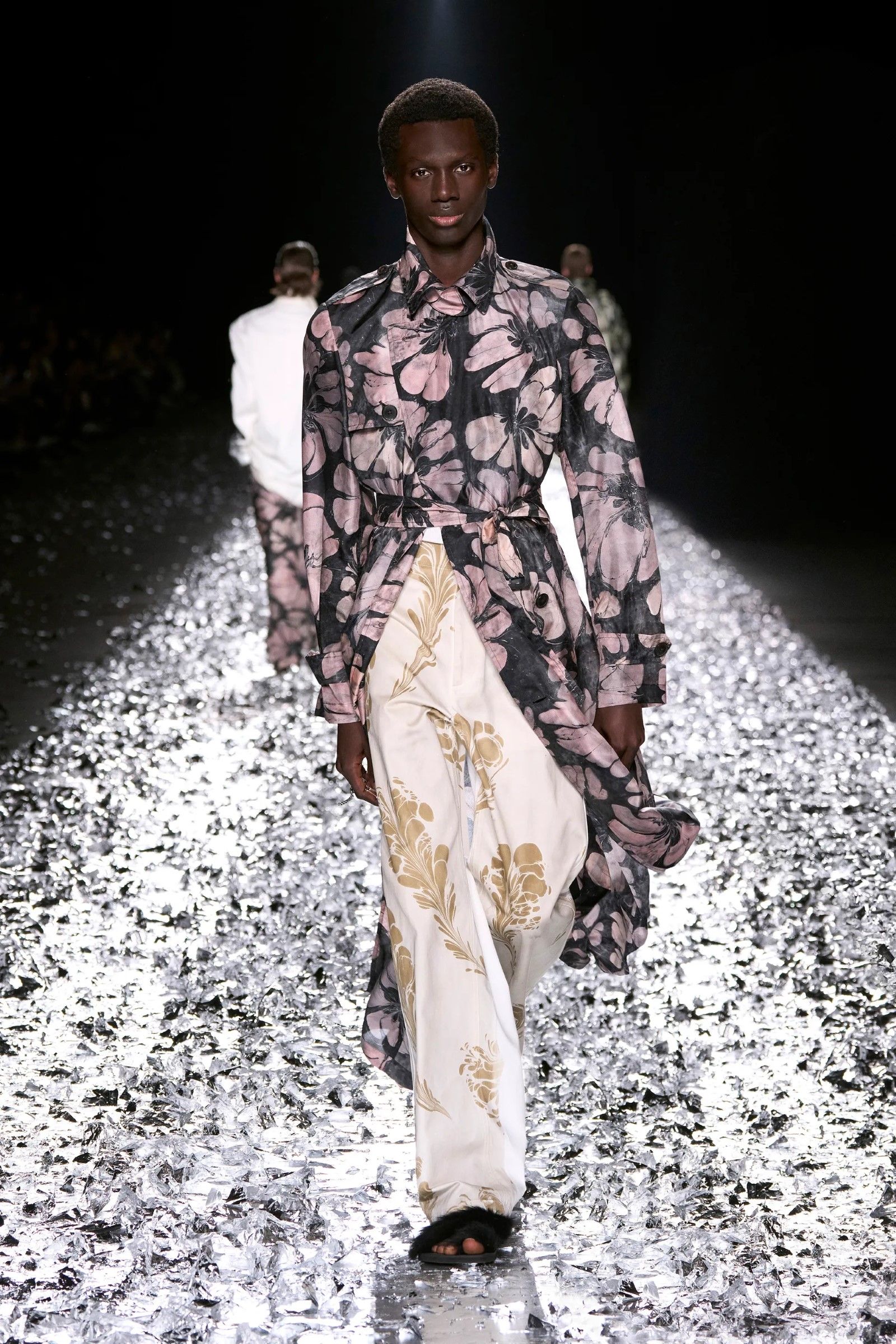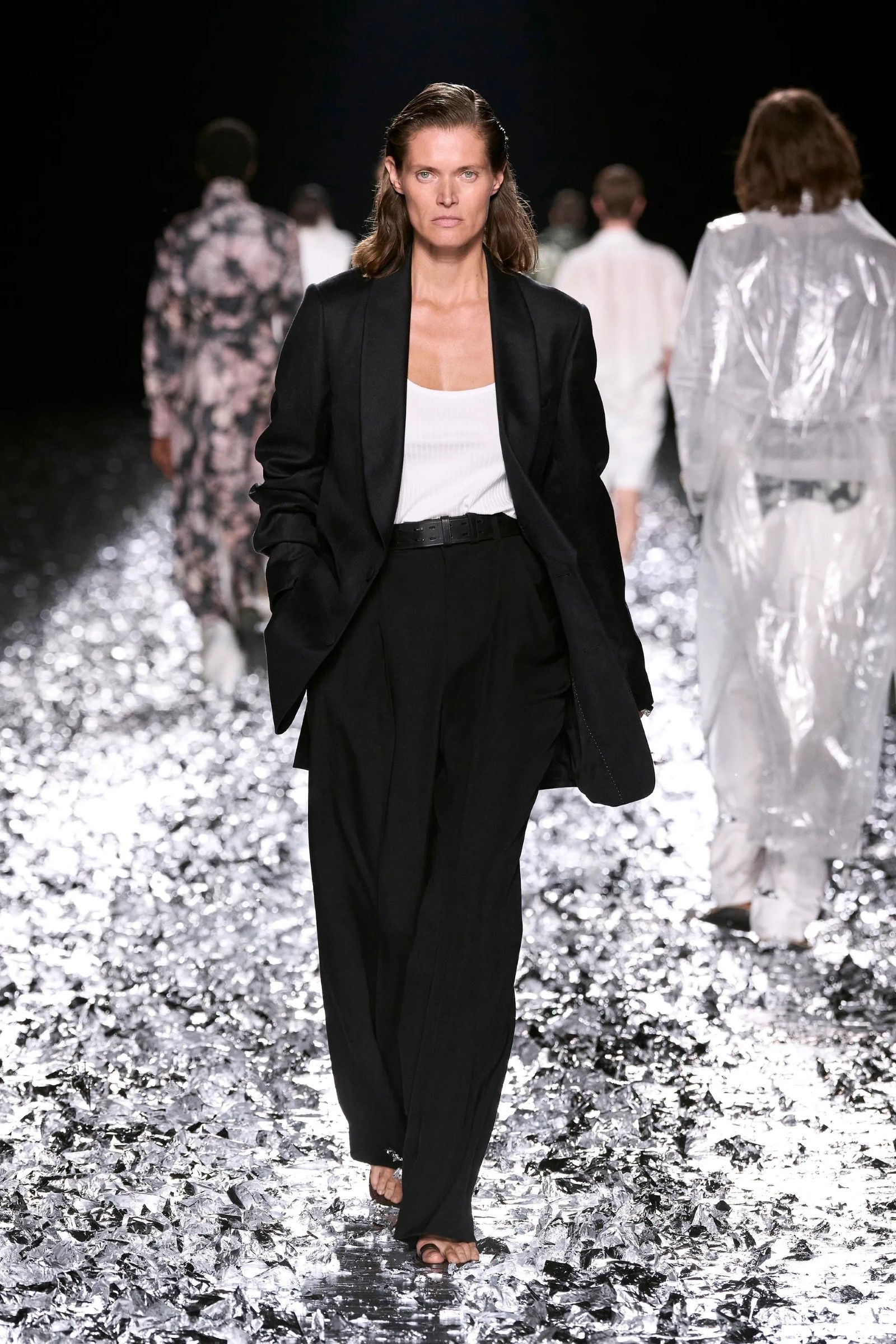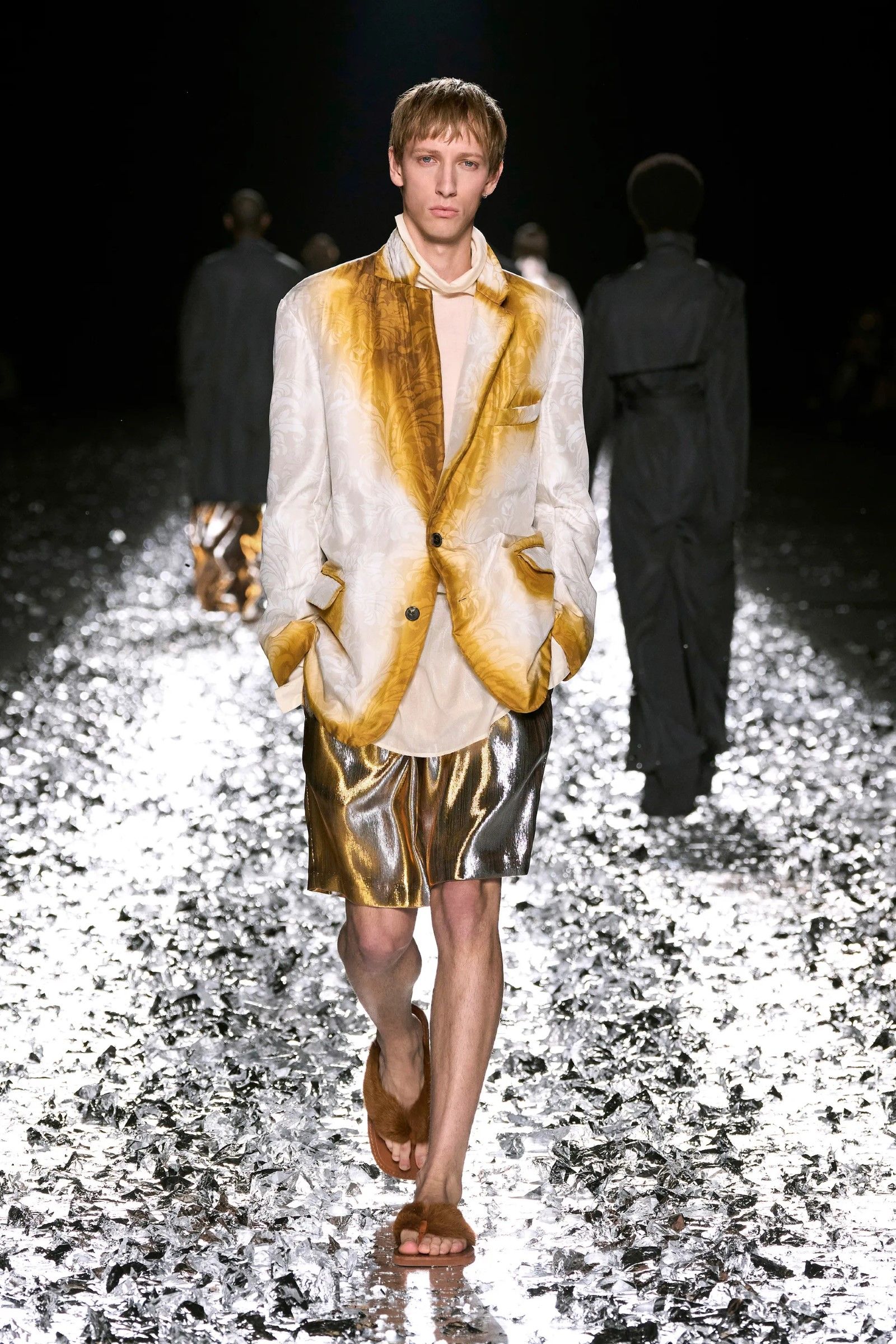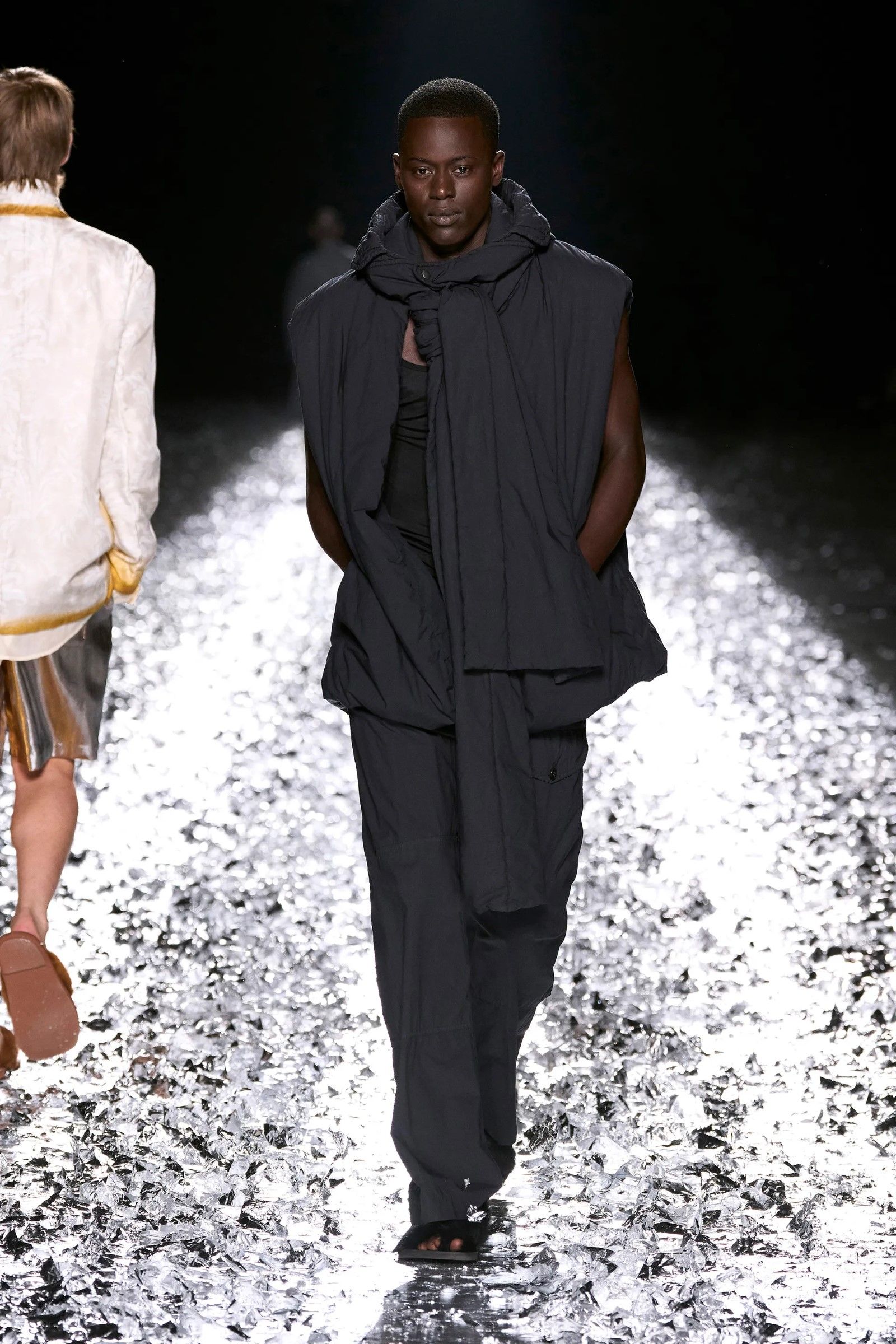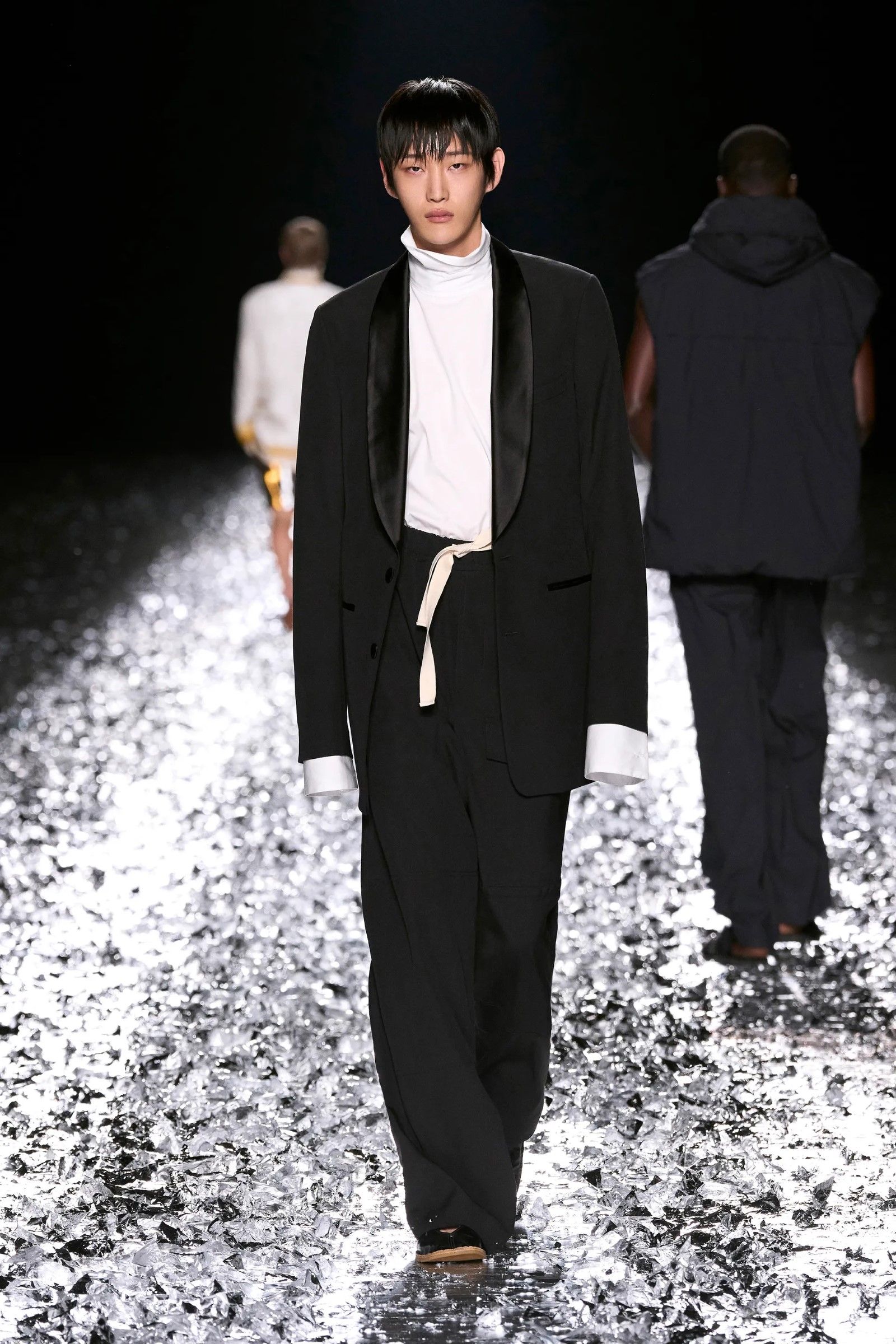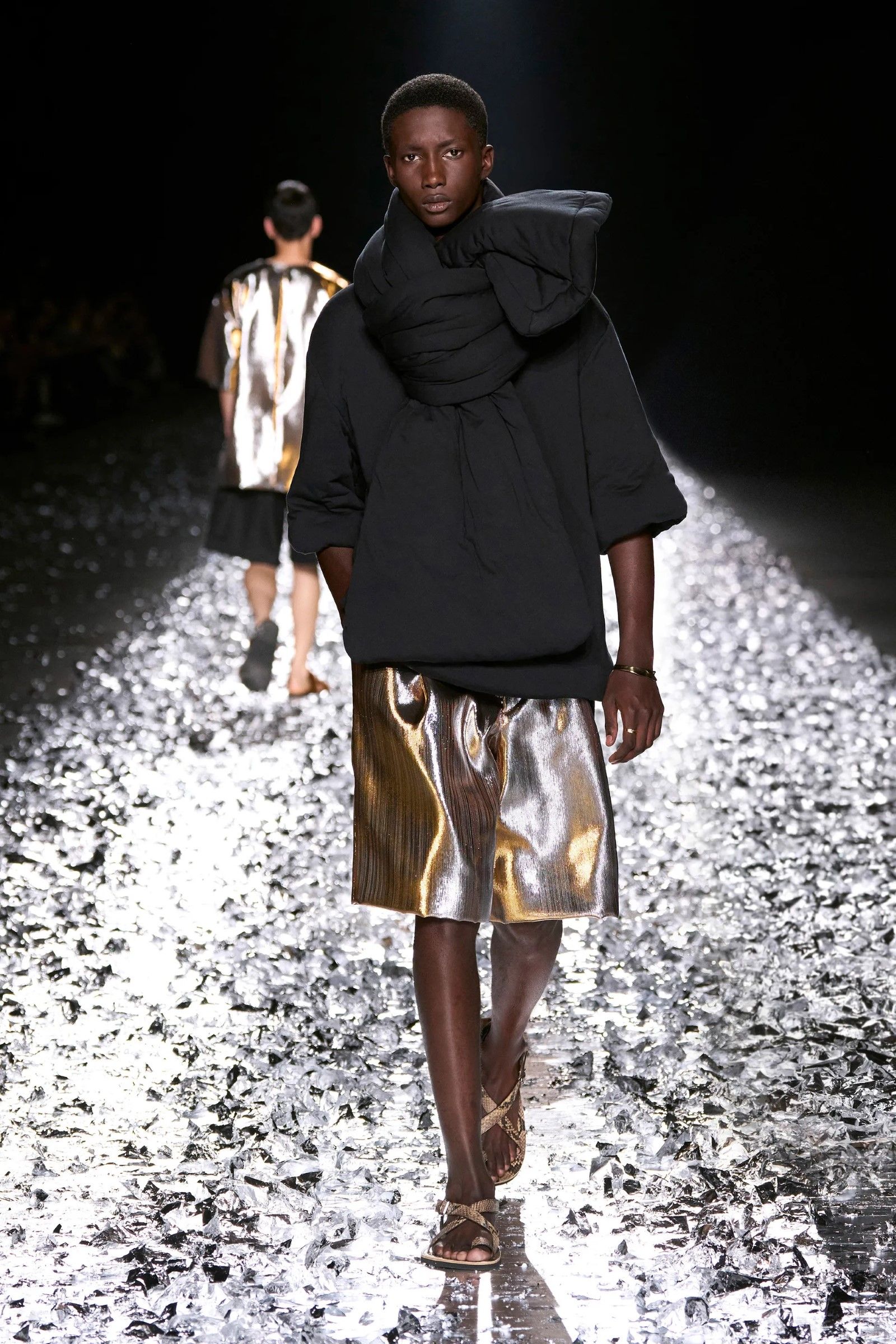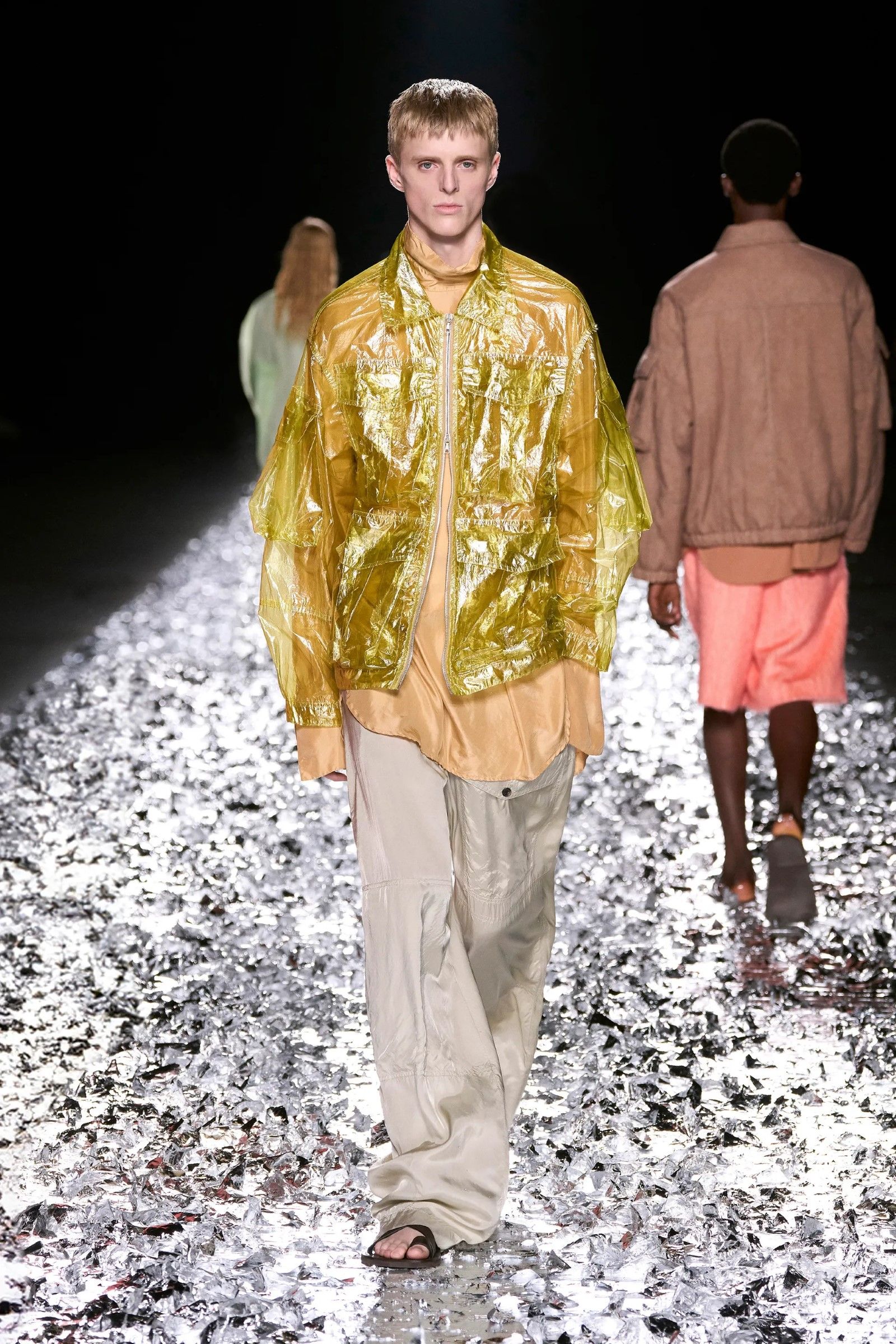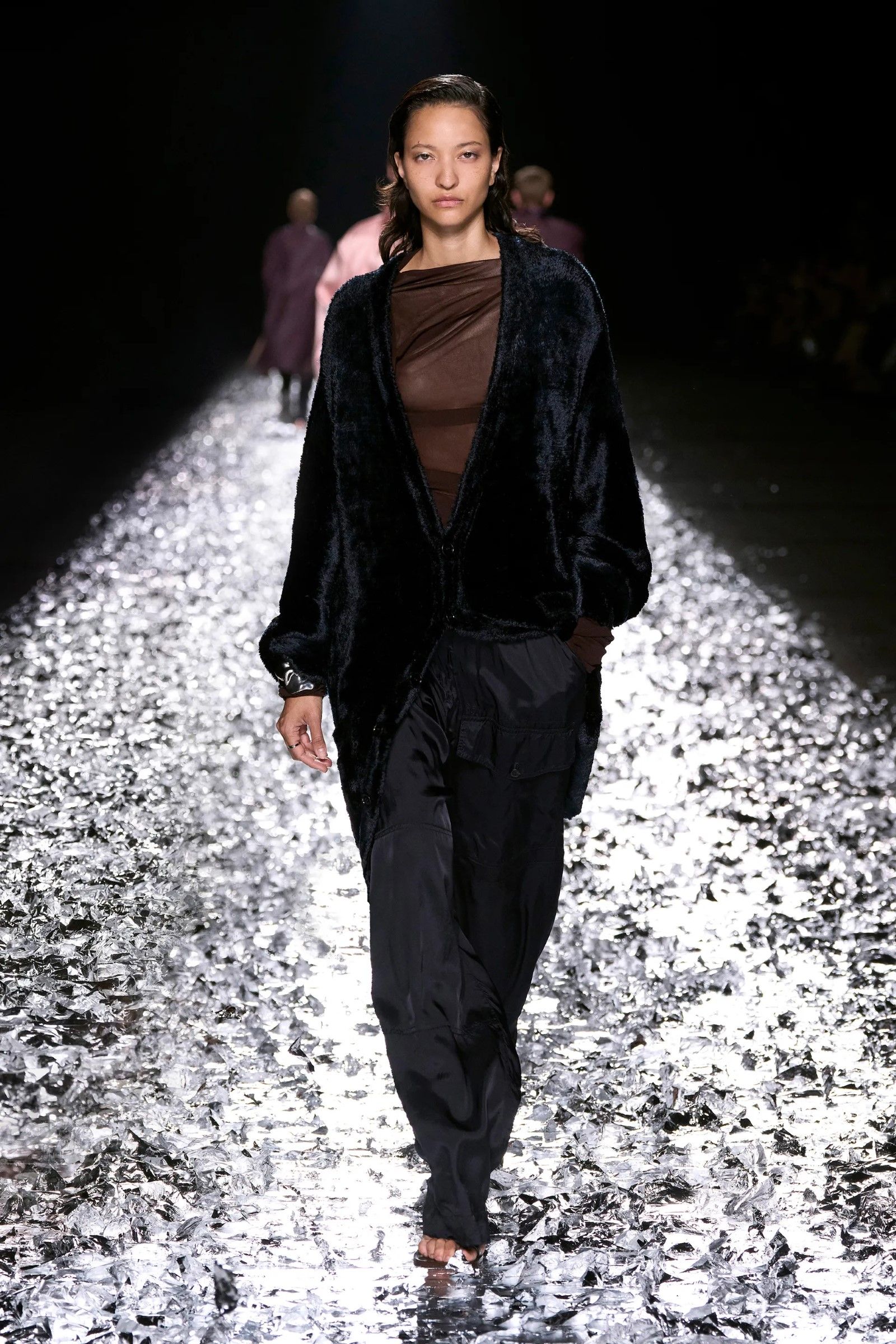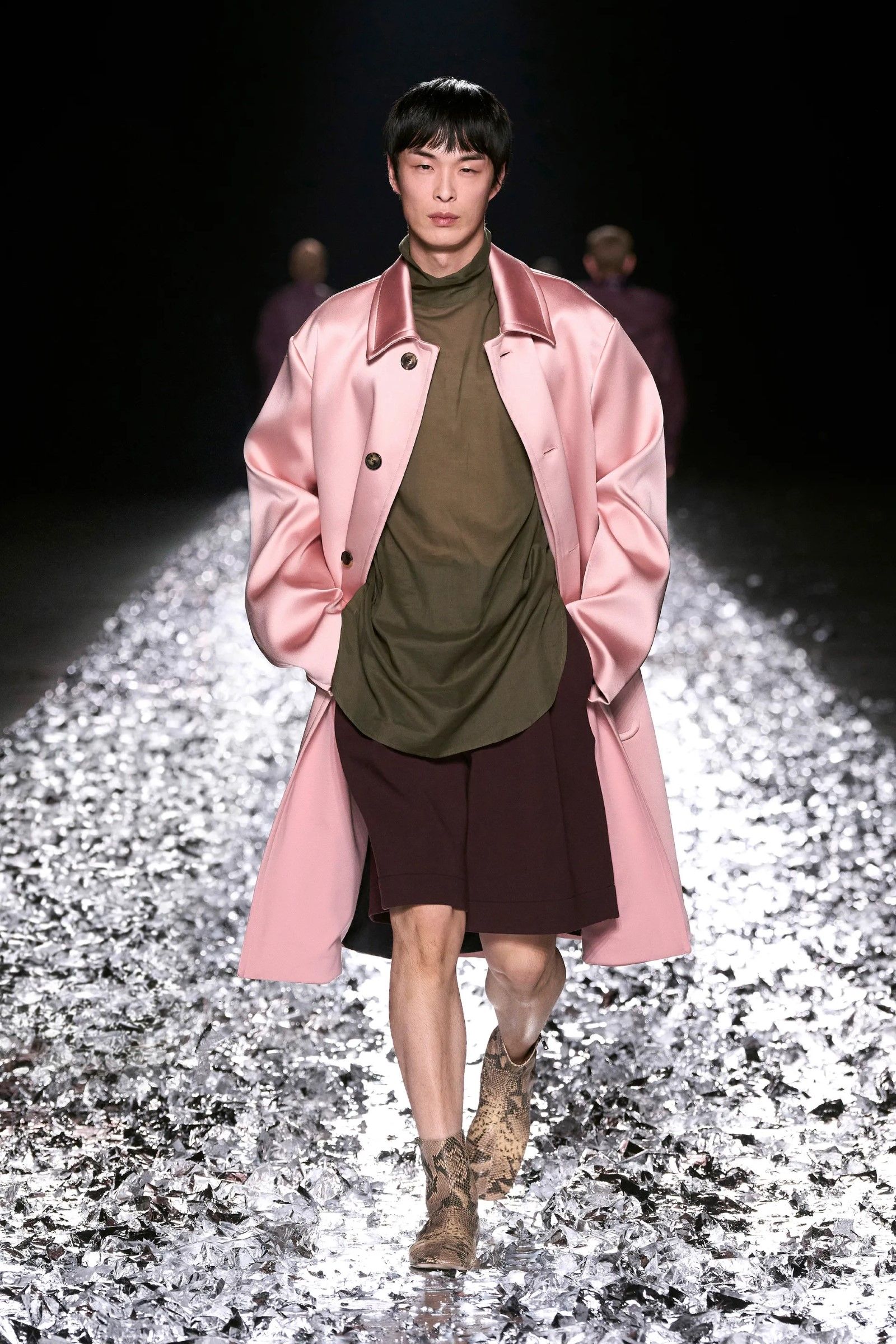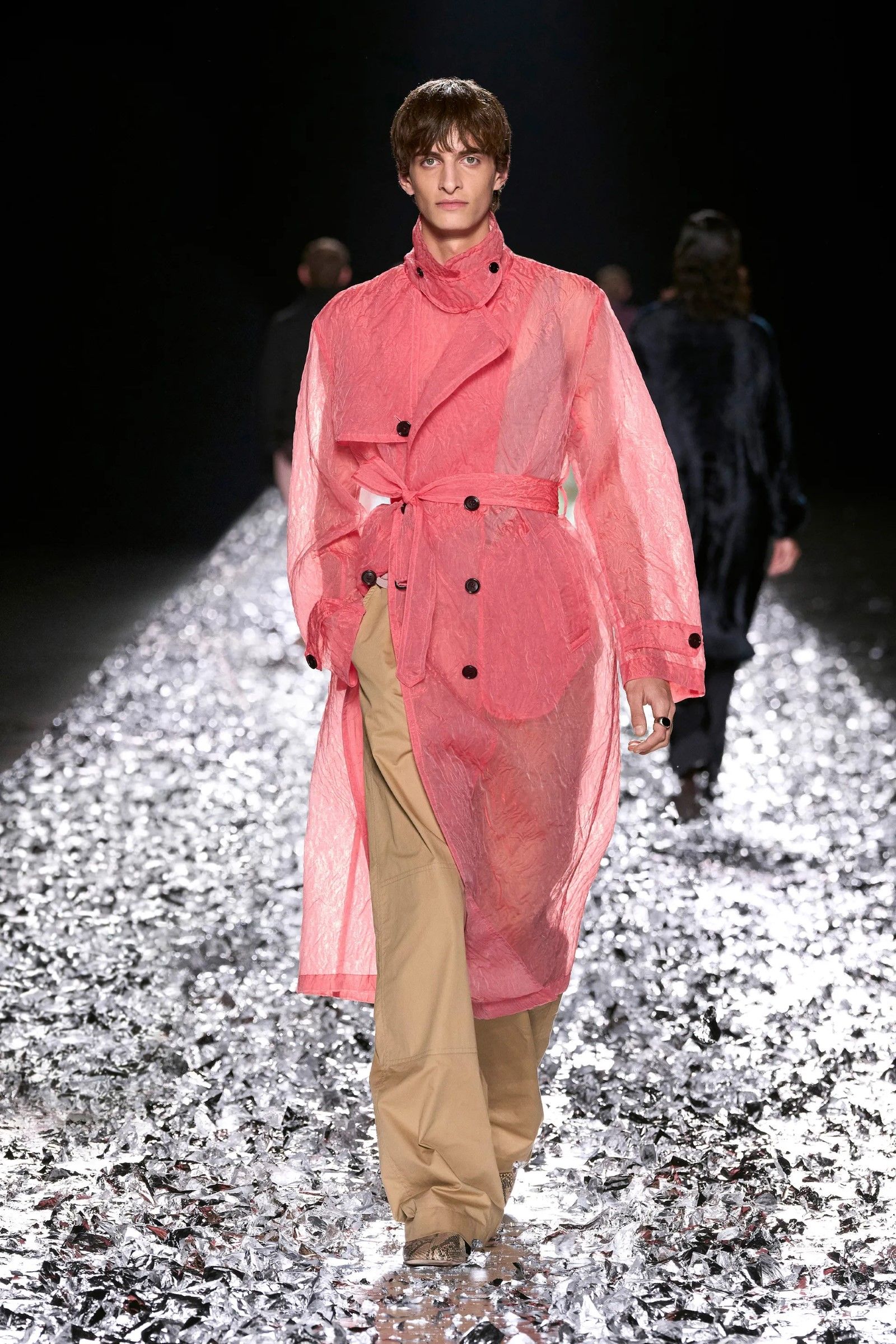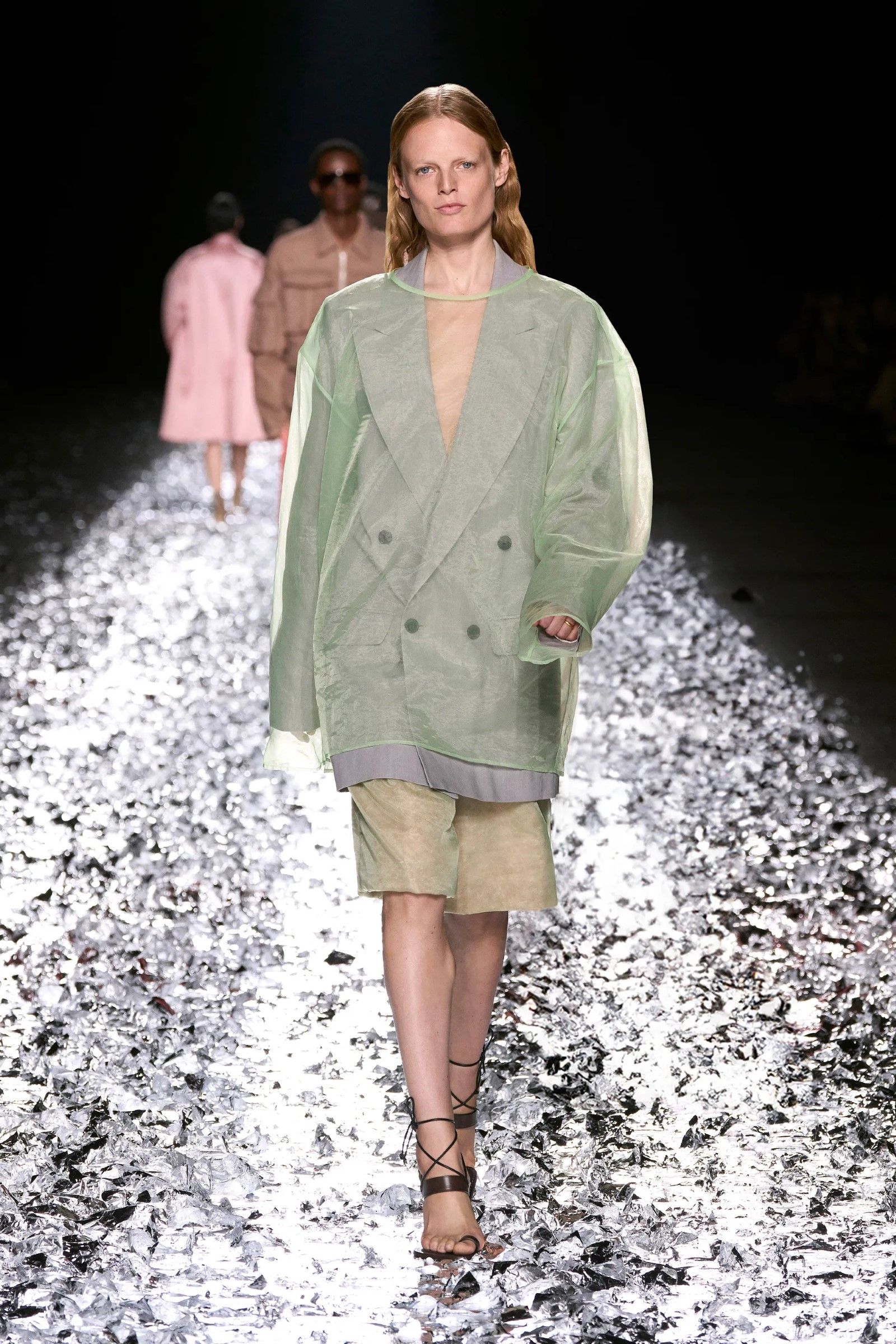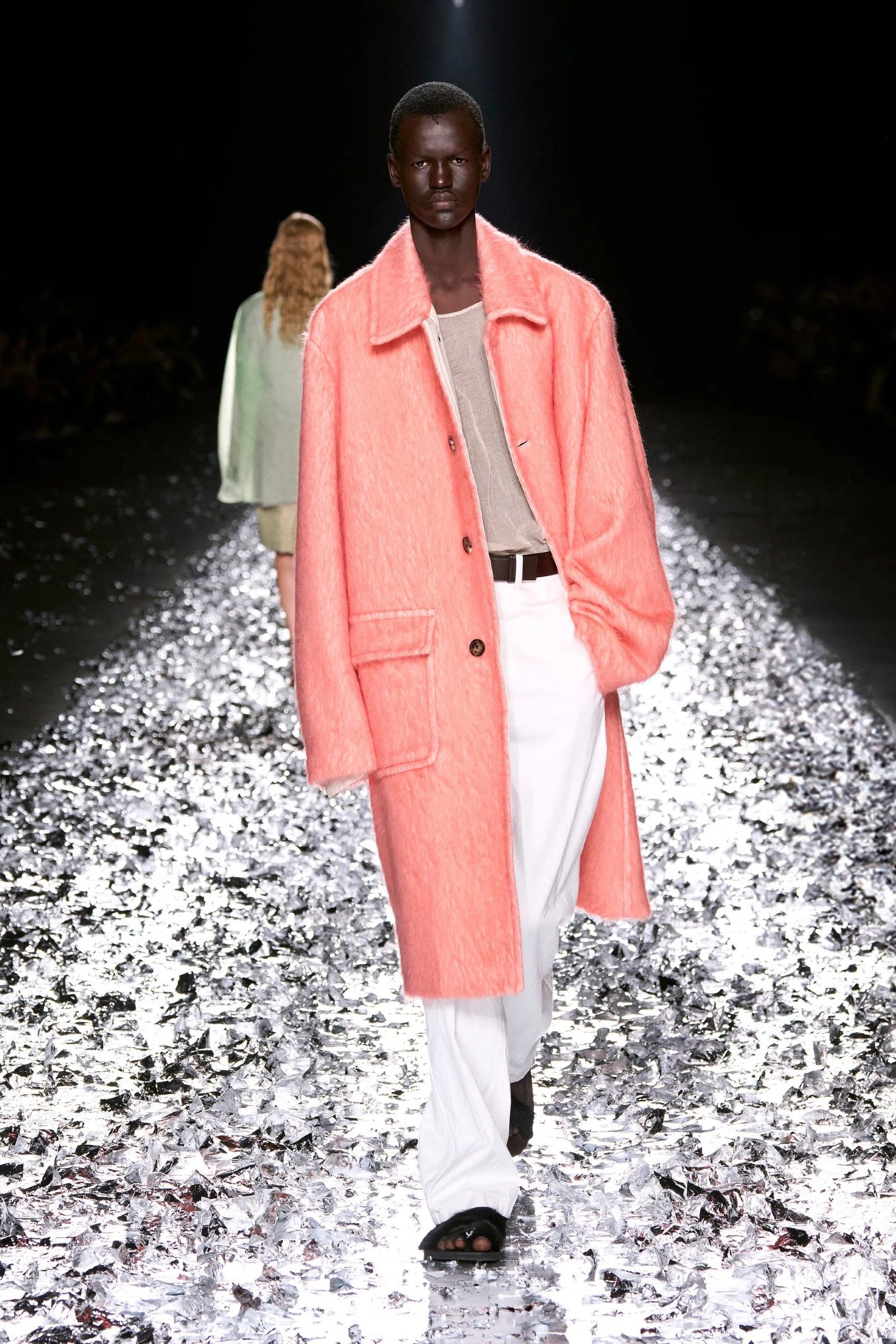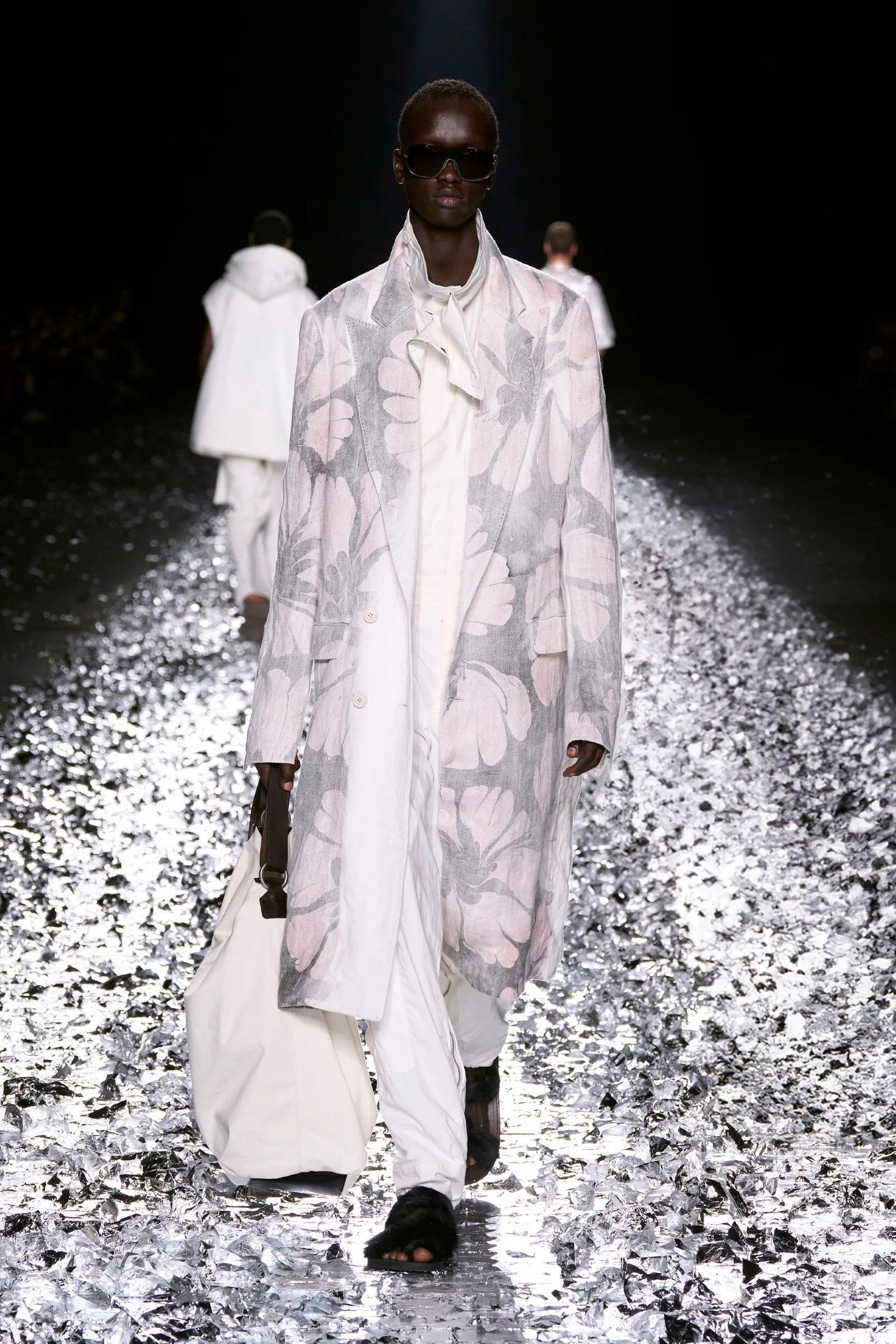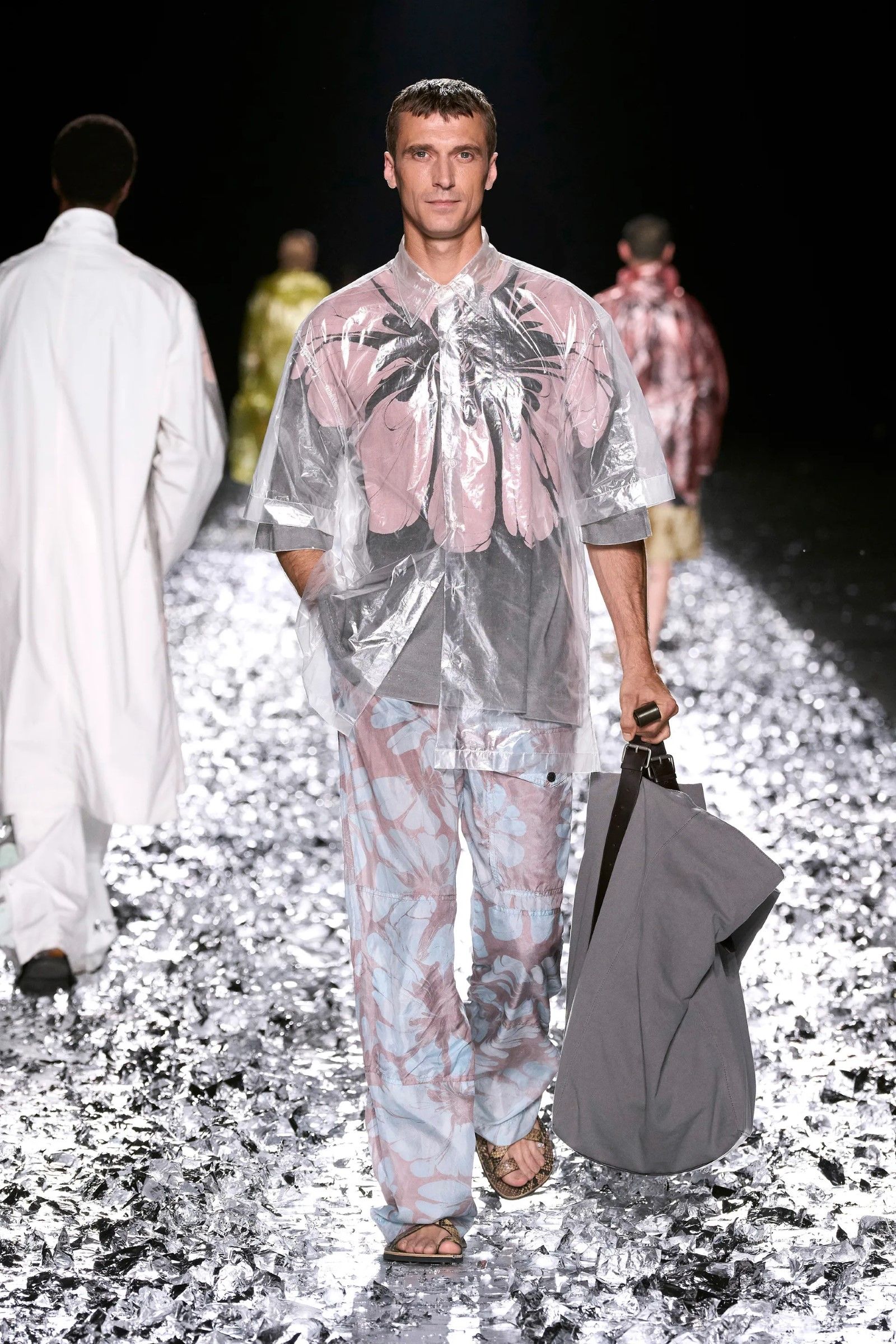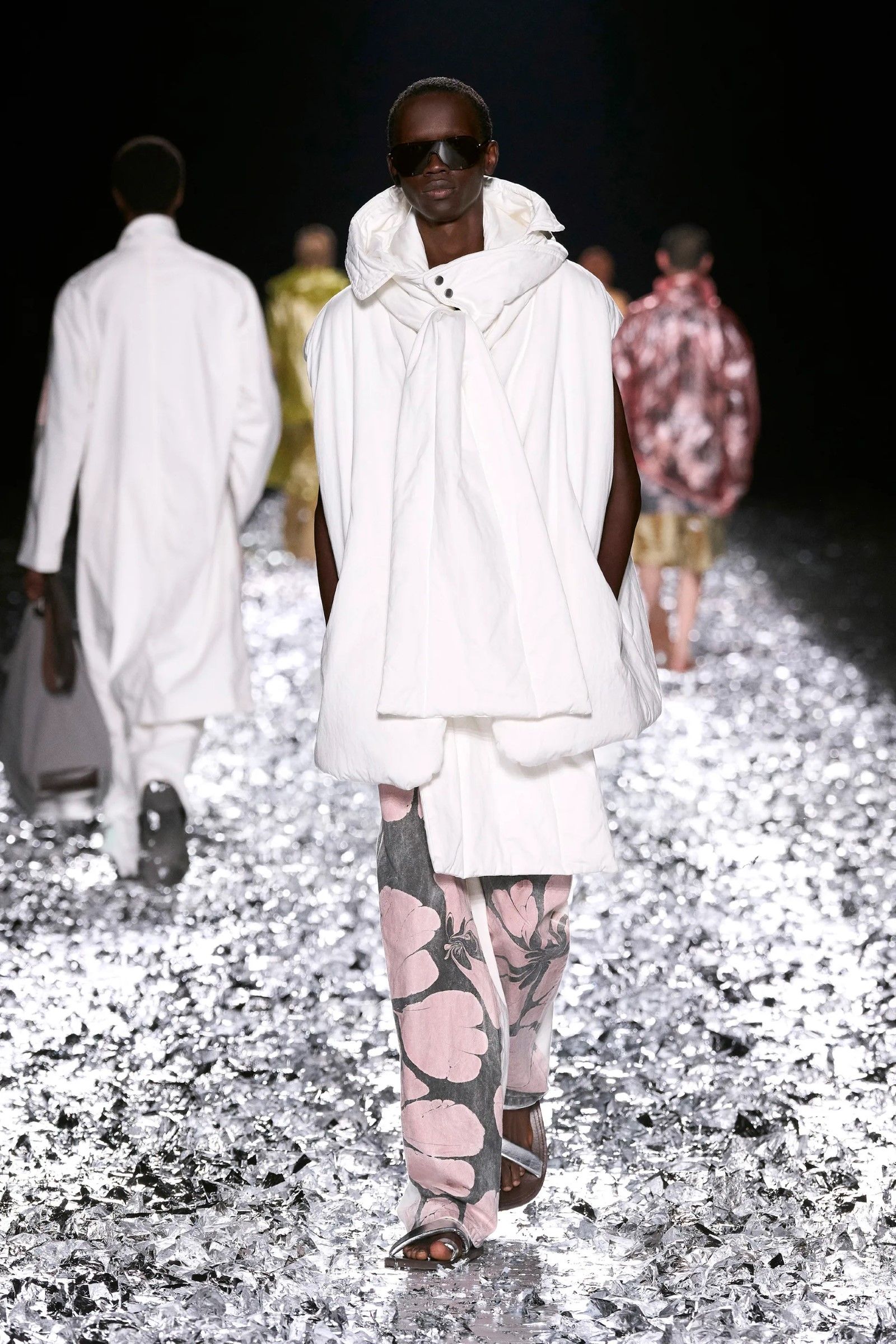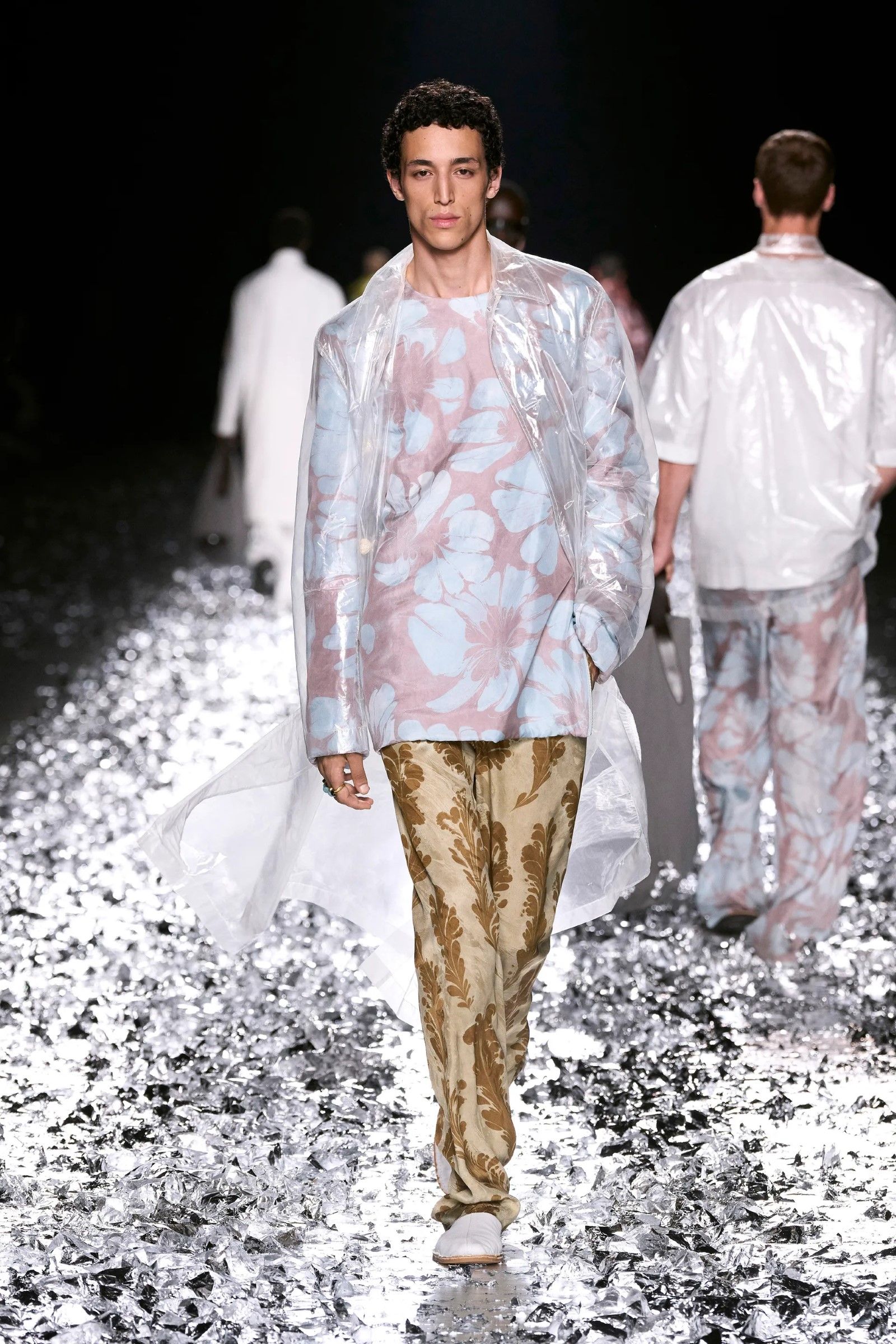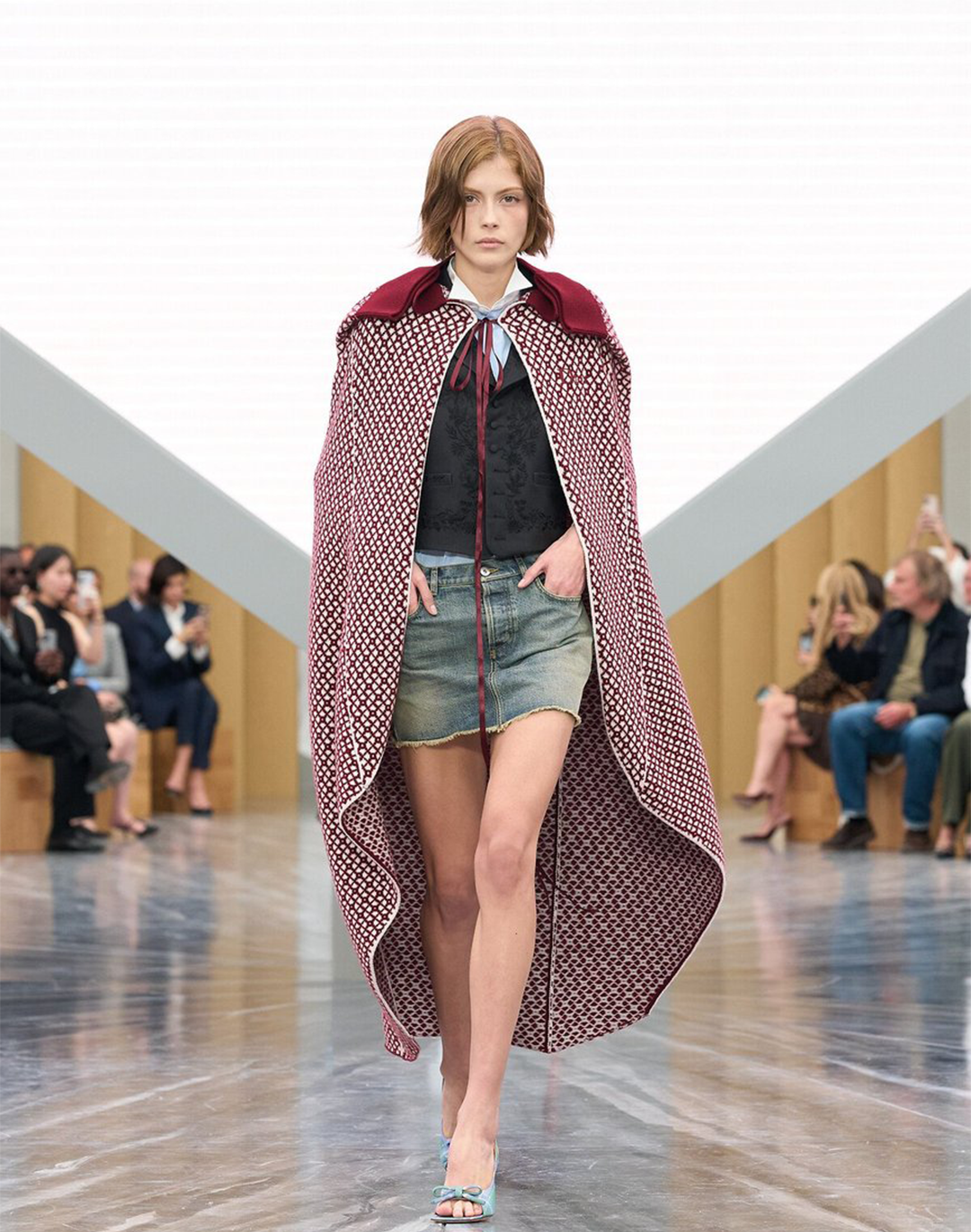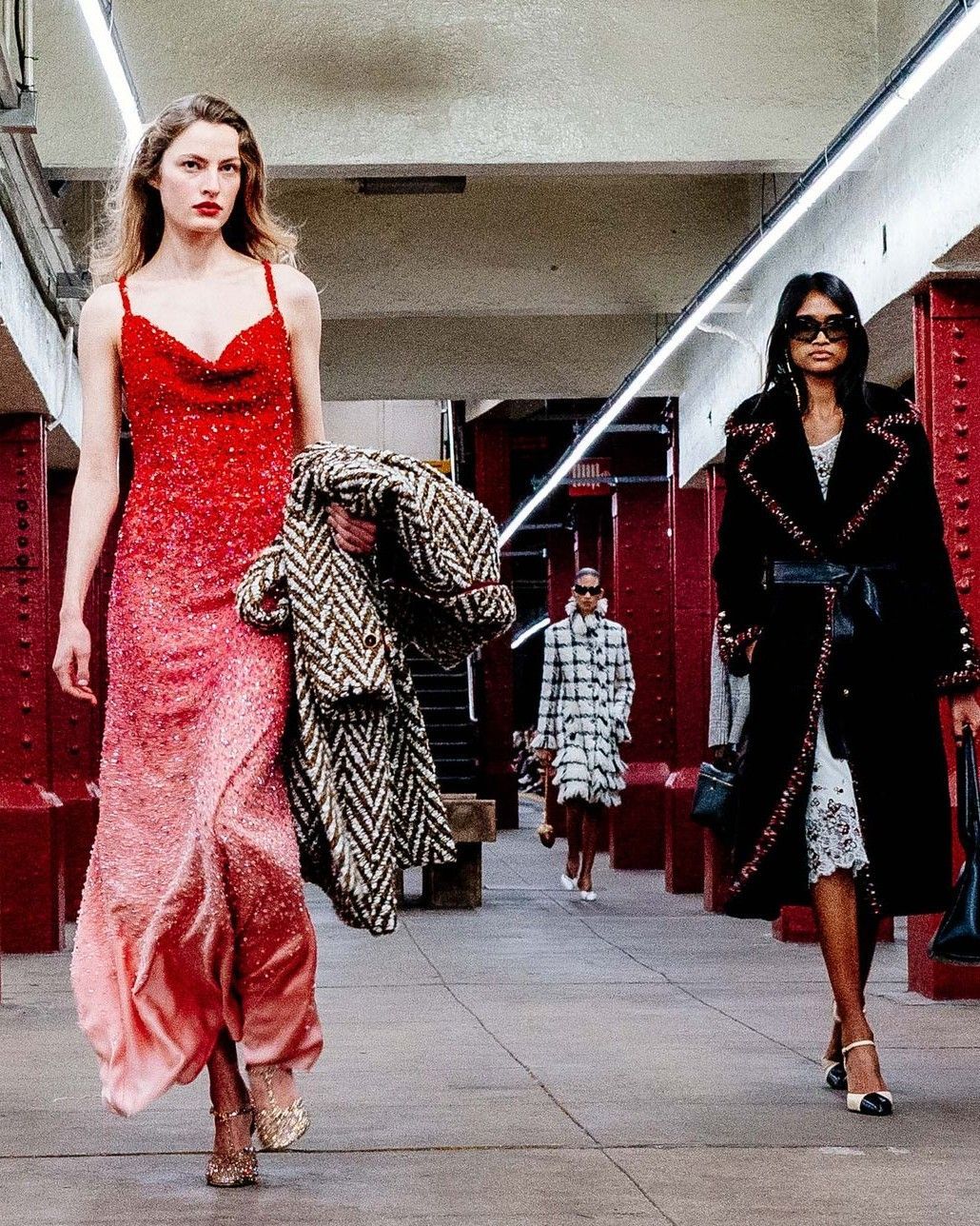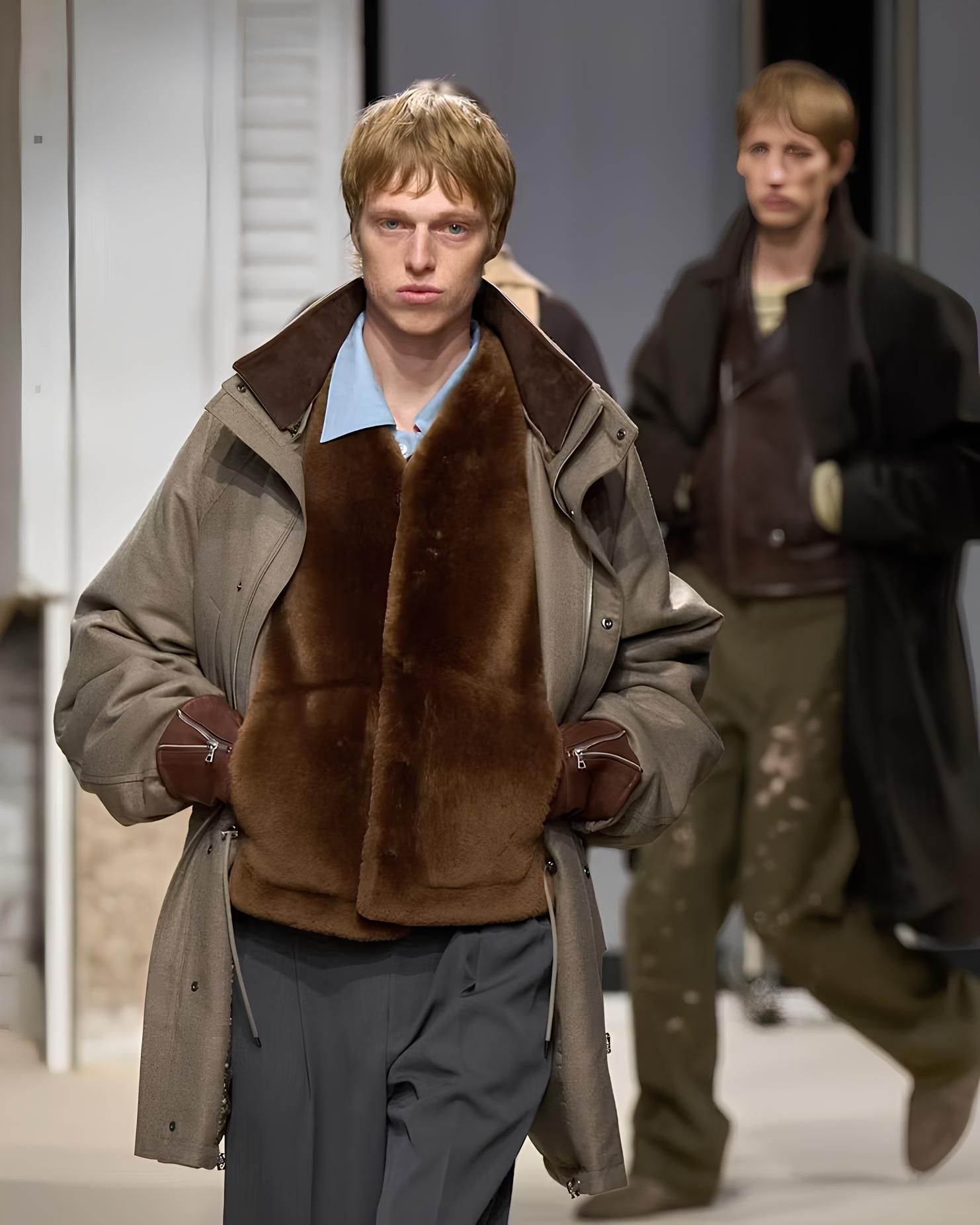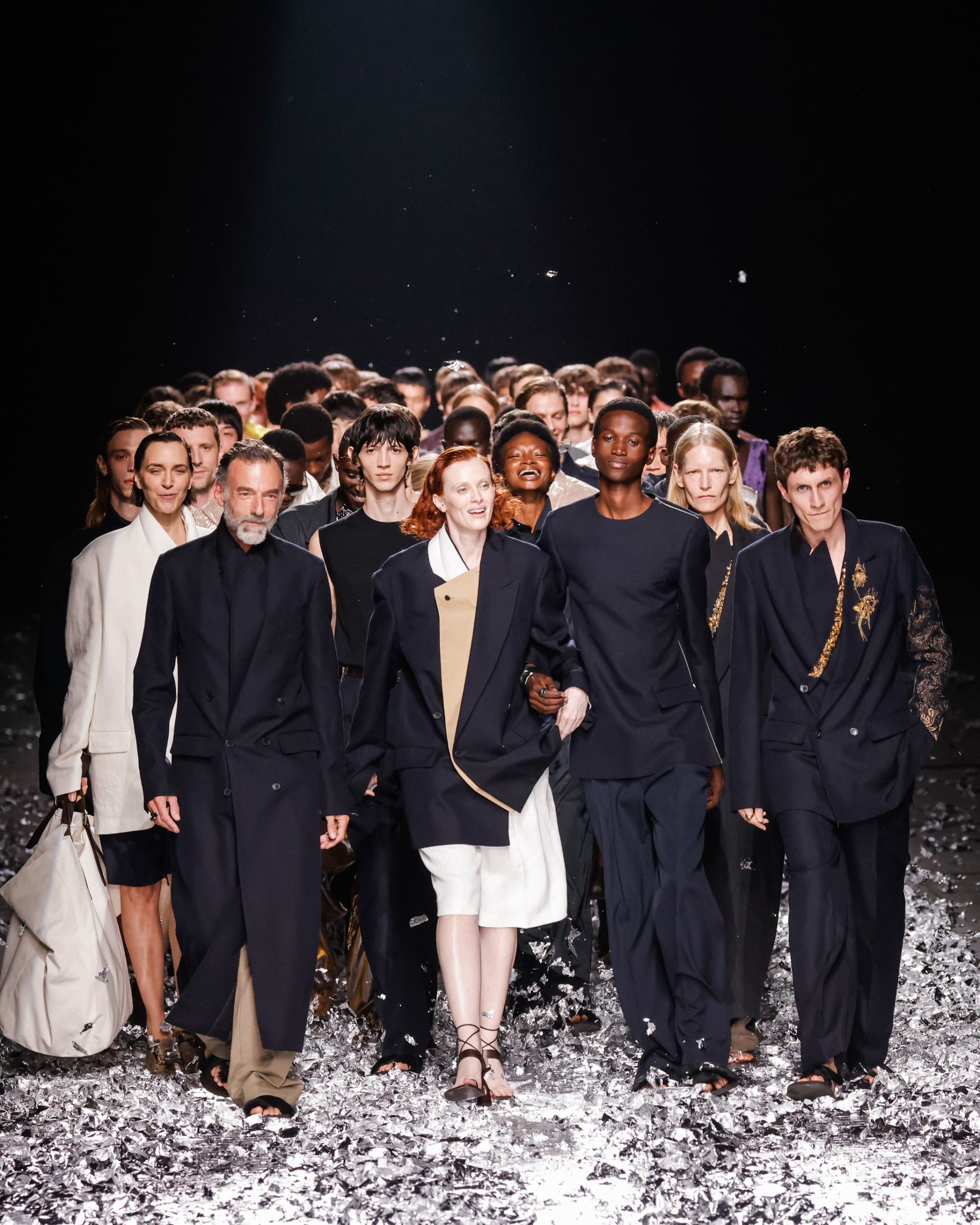
Dries Van Noten's nostalgia for the future A goodbye, rather than a farewell, for the Belgian master
In his message included at the end of the notes of his latest show as creative director, Dries Van Noten quoted Marcello Mastroianni and his “nostalgia for the future,” a kind of romanticism of looking forward, also adding that this show did not represent a grand finale. Nonetheless, the atmosphere was fairy-tale-like: very few celebrities, a lineup of aficionados of the brand and long-time clients, but above all, a gathering rarely seen of fashion powerhouses all come to celebrate a companion, a colleague, and a friend at his swan song. Ann Demeulemeester, Walter van Beirendonck, Haider Ackermann, Glenn Martens, Thom Browne, Diane von Frustenberg, Pierpaolo Piccioli, and even, according to accredited sources, Martin Margiela anonymously present among the audience, coming out of his (for lack of better terms) seclusion to celebrate Van Noten. The theme of “nostalgia for the future” meant, for Van Noten, not to treat his last show as a playlist of his greatest hits – which would have meant enclosing his work within a well-defined beginning and end, bottling it for the future but museumizing it, depriving it of vital momentum, transforming it into a self-contained anatomy. Instead, Van Noten preferred to produce the most refined work possible, leaving the scene with an open ending that bridges the conclusion of his journey with the beginning of a new path. It is no coincidence that the designer emphasized that he will not simply retire but will continue as a sort of mentor to oversee the brand.
Precisely because the only nostalgia present was that of the future, Van Noten conceived a meditation on elegance today, always going beyond the classic sartorial limit to transform archetypes into something more advanced. The collection was dominated by double and single-breasted suits and coats with elongated silhouettes and fluid profiles. Many tops were longer than usual and vaguely flared, blending knitwear, tunics, and dresses into a delightfully indistinct hybrid. The idea of layering was turned on its head with looks composed of pants or shirts created in transparent organza, "normal" but ethereal garments that float in translucent volumes. The impression of an oblong silhouette was also achieved thanks to the extremely high-waisted trousers. The visible layering of different pieces redefines and embraces the body on one hand, and on the other, makes the materials themselves and their treatments a vehicle for the sense of lived-in and historical that Van Noten intended to convey: «Before being worn, a garment is coded with stories», reads the show notes. «Before a piece of clothing is worn, it is encoded with stories. When design comes from a personal place, every detail and decision is meaningful. Materials are evidence of time and transmit emotion; how they are treated or transformed. […] Clothes that move through life with us, carrying us forward». And how far forward: there was a herringbone men's coat in chalk white covered with a deliberately faded floral print; a jacket whose damask pattern lit up at the edges and on the lapels, becoming something close to saffron or gold; prints that faded around a pant leg but also applied to shirts so light as to be semi-transparent, as well as pieces covered with an invisible glossy layer, almost like Chinese lacquer, and lapels that, when turned up, revealed new colors. The list could go on, but looking at the looks is simply a thousand times better than describing them in words.
In the combination and juxtaposition of materials, one could see the thought sparkle: heavy and light cottons, linen and organza, wool paired with neoprene, cotton and silk pongee, python leather and jersey, but also metallic surfaces resembling liquid mercury, crinkled polyamides, recycled cashmere – a selection of materials worked and reworked that, in painting, would correspond to sfumati, chiaroscuros, and all those visual artifices that create the visual richness of a Flemish painting. The idea, as always, was to try to ignite a spark from something ordinary, to awaken the meaning of a certain garment through an only apparently contradictory continuity, the illusory heaviness of a fabric, the virtuosity of contrasts, subtle but secretly whimsical details like the feminine look where a green transparent tunic covers a long gray blazer paired with beige shorts covered by the same green transparent organza. As further decorative elements, there was primarily the use of a Japanese technique called suminagashi which involves creating marbled ink patterns on water, then transferring them onto fabric, creating unique and random designs, indeterminable beforehand. There were also botanical prints with large leaves and flowers and sumptuous embroideries with gold reliefs and gems tangled like creepers on sleeves, shoulders, and lapels. On the feet, there were deconstructed boots, numerous sandals and flip-flops, but also classic loafers and Moroccan-style babouches that mixed Orientalist suggestions with already reinvented Western clothing topoi. All this in the widest variety of colors: from the opening and closing blacks to navy blue, ecru, cement, grays, pink, olive, burgundy, gold and silver, peach, rust, lime, turquoise – all saturated palettes that varied in tone and intensity depending on whether they were applied to normal, glossy, or transparent fabrics.
There was also room for a healthy nostalgia for the past: the model who opened the show, Alain Gossuin, for example, was the same one who had opened Van Noten's very first show 38 years ago. And it is to be suspected, if it is true that Margiela himself was present, that the collective emotions of Van Noten himself and his colleagues and designer friends were incredibly high, like the final chapter of a long saga in which they all started as fashion students like so many others. But it was obvious that this show would be a celebration of these affections, a homecoming so to speak, as well as the culmination of a career carried out in a fashion world facing increasingly dramatic changes. We recall an interview he gave last year to WWD: «The whole celebrity situation is getting kind of out of control. Having a celebrity on the catwalk, having a celebrity in the room…now I think more of the reviews are about who is sitting front row than what the collection was about. For me, fashion deserves much more than to be reduced to something like this». If he had not wanted to retire from the scene, and judging only by the collection, Van Noten had much more to say and do. Nonetheless, by concluding a long and honored career, turning the page at this point in his life, the individual Dries Van Noten tells us that in life you have to move forward or be moved forward just like in art; that the past is not the last refuge of feelings and that there can be richness without ostentation, intelligence without pretension, and passion without exhaustion.











































